Colombia has certainly earned its nickname “el pais de la belleza,” or, “the country of beauty” for good reason. It’s a country of extraordinary diversity – from the tropical landscapes of the Atlantic to the paramos of the high Andes.
With three weeks to spend in the country, you’ll have time to see a little bit of everything – from the rolling hills of the coffee region to the coastlines of the Caribbean. This 3 week Colombia itinerary is designed to get a little taste of it all, as well as break down everything you need to know to plan the ultimate trip to Colombia.
But why should you trust me? I’m on a mission to explore all 32 departments of Colombia, so I’ve seen my fair share of the country and learned plenty of lessons along the way. You can check out all my Colombia itineraries here to keep exploring.
This site uses affiliate links to share products that I use and love! If you click on one of the links I may receive a small commission at no additional cost to you. This helps keep my site up and running — thank you!
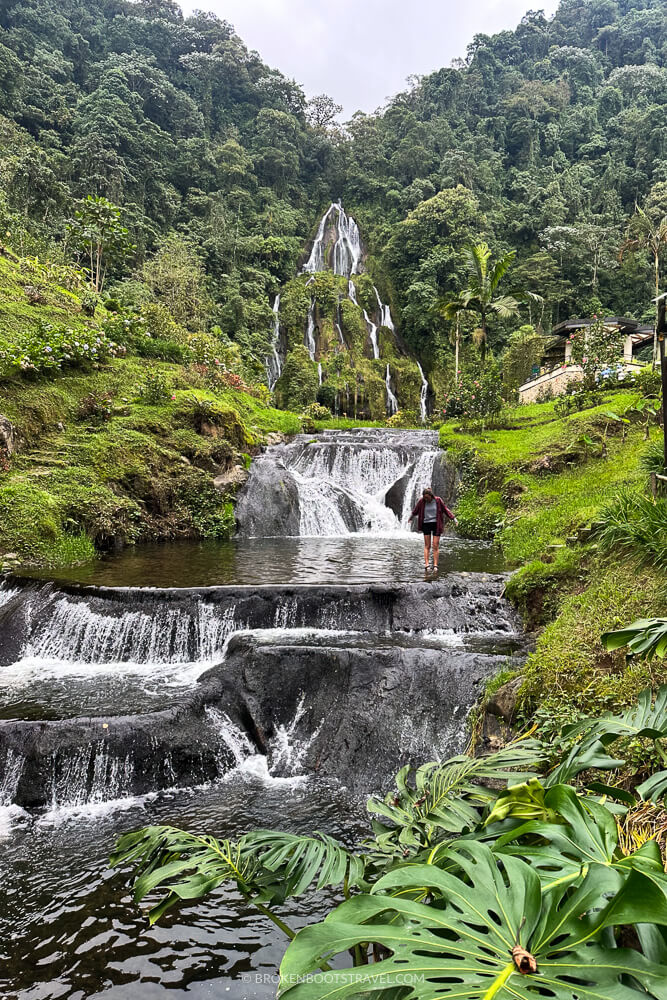
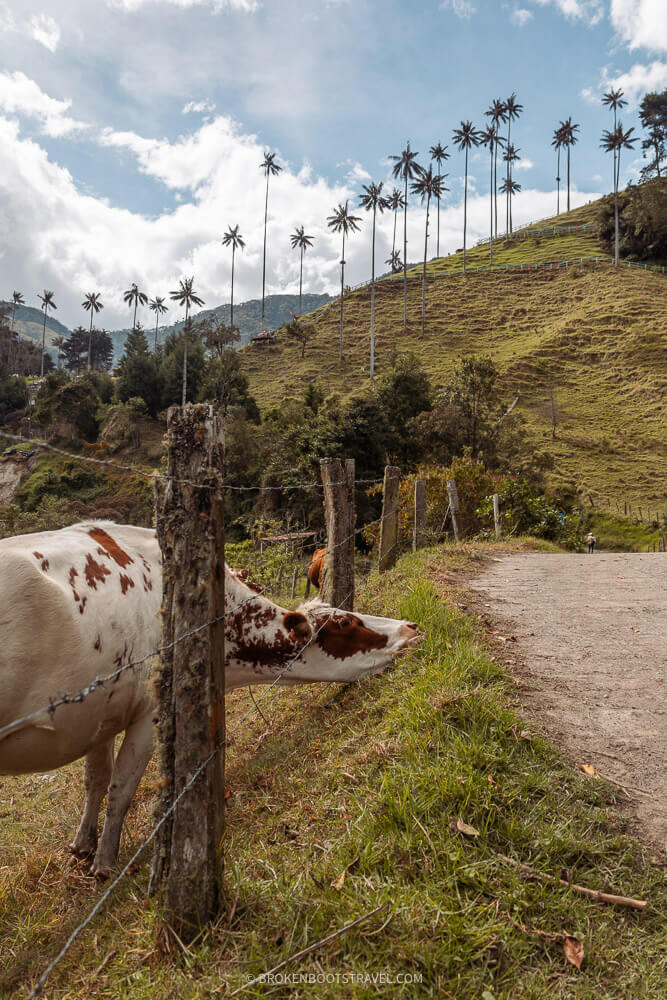
Colombia Planning Essentials
✈️ Flights – Use Kiwi.com or WayAway to find the cheapest and fastest flights to Colombia
🛏️ Accommodation – Find the best places to stay throughout Colombia on Booking.com
✅ Get Insured – I personally use Safety Wing Nomad Insurance for my travels all around the world! VisitorsCoverage is another great option.
🚗 Rent a Car – Find the best deals for a Georgia road trip on RentalCars.com
🗺️ Find Things to Do – Check out Get Your Guide or Viator for exciting adventures all around Georgia
☎ Buy a Sim – Airalo offers eSIMS for over 200 countries and regions
Staying safe in Colombia – Check out my in-depth guide to safety visiting the country, from common scams to safety concerns!
Colombia Itineraries
Have less time to spend in Colombia? Consider one of my region-specific weeklong itineraries for a more in-depth experience.
- 1 Week Caribbean Coast Itinerary
- 1 Week Coffee Region Itinerary
- 1 Week Bogotá and Medellín Itinerary
Days 1-3: BOGOTA
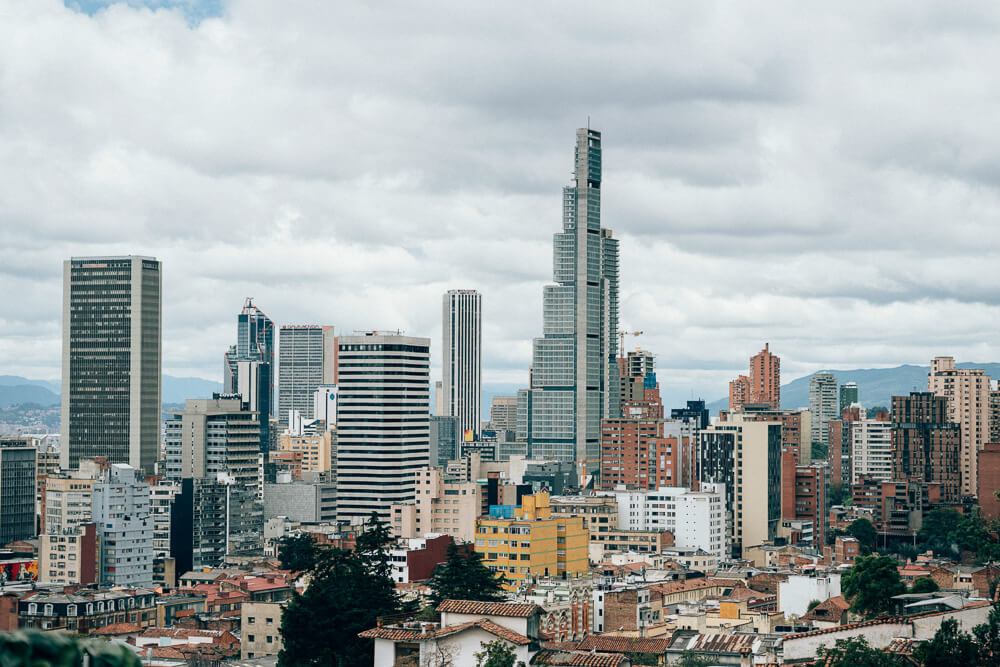
Most travelers’ Colombia itinerary begins and ends in Bogota, the bustling capital city of the country. It’s far too often overlooked by backpackers due to its gritty exterior, but Bogota is a city bursting with history, art, and culture. It’s a great place to get acclimated to Colombian culture – and eat some ajiaco along the way!
Don’t want to DIY? Check out the best of Bogota on Get Your Guide:
Where to Stay in Bogota
By far the most popular neighborhood amongst backpackers is La Candelaria. Known for its colorful murals and colonial architecture, it’s also walking distance from most major attractions and home to a diverse range of accommodation – from upscale hotels to budget-friendly hostels. Want to explore a different side of Bogota? Art and coffee lovers will thrive in El Chapinero, whereas those looking for the foodie culture of Bogota should look no further than La Zona Rosa.
🎒 Viajero Hostal Bogota – Popular hostel chain in Colombia located in La Candelaria neighborhood
📚 Candelaria House Boutique – Cozy apartment in the heart of La Candelaria
🌆 Studio Apartment in El Chapinero – Fully equipped studio apartment with city views
🏠 Casa Aranjuez – Quaint hotel located in a traditional home in La Candelaria
Explore all accommodation in Bogota on Booking.com
How to Get to Bogota
Travelers arriving in Bogota will fly into the El Dorado International Airport. The airport is located on the west side of the city, so you’ll need to catch a taxi if you’re staying near the tourist area.
Taxi drivers outside El Dorado are notorious for upcharging travelers, so I highly recommend downloading the InDrive app before arriving in order to help negotiate a fair price.
Day 1: Arrival in Bogota
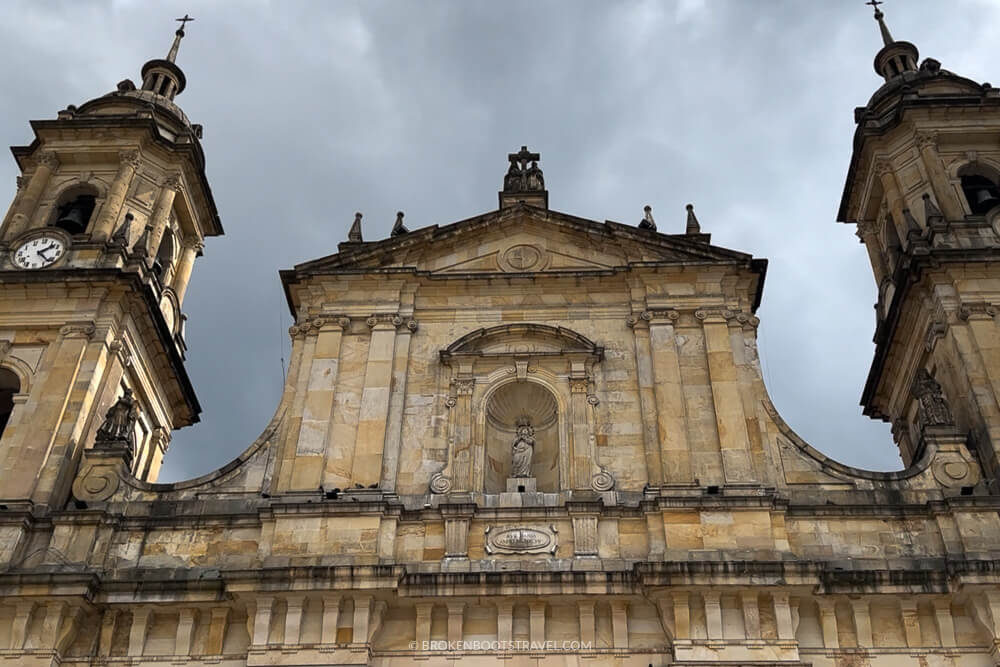
Wherever you’re coming from, most travelers will begin their 3 weeks itinerary in Colombia in the capital city of Bogota. It’s an artsy, eclectic city with diverse architecture, ranging from towering skyscrapers to colonial-era buildings. One of the best places to start is in the Plaza Bolivar — the central plaza of the city and home to some of Bogota’s most iconic buildings.
At the end of the day, unwind with the ultimate Colombian comfort food – ajiaco. This hearty stew is a base of chicken and potatoes, but comes served with a number of add-ins, from fresh sour cream to creamy avocado to tangy capers.
Bogota is the home of ajiaco, known as ajiaco santafereño. The best place to eat ajiaco in Bogota is Plaza de Mercado La Perseverancia, located just outside the La Candelaria neighborhood.
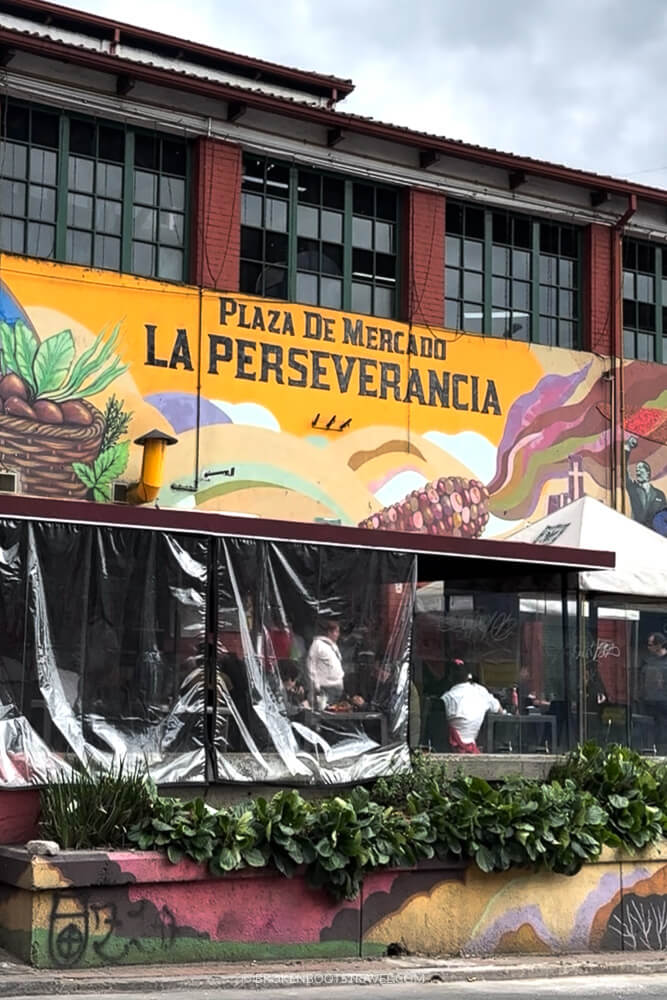
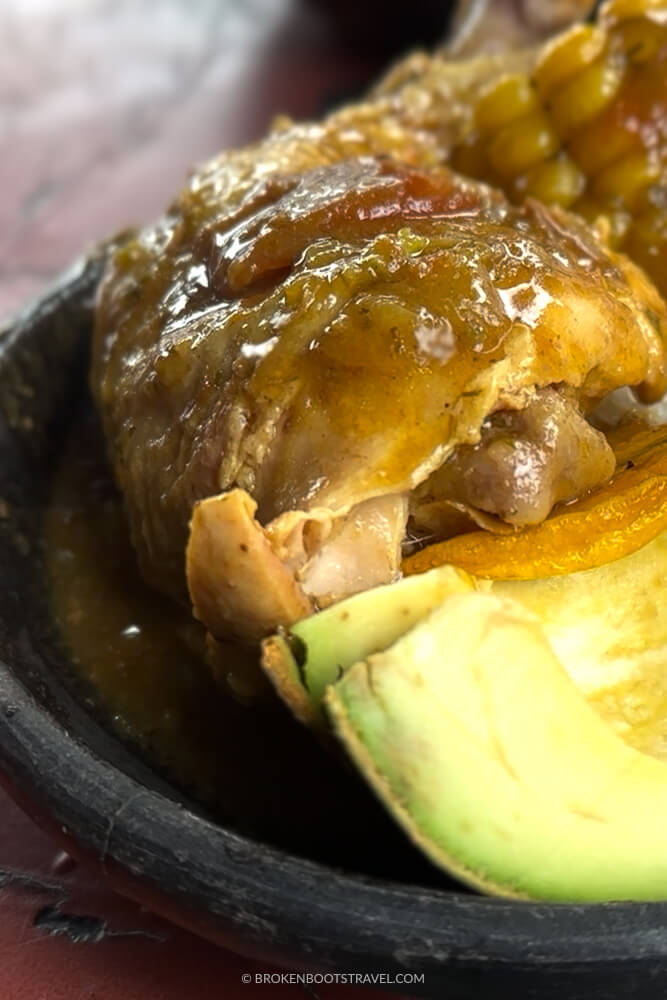
Day 2: Exploring Bogota
Start your first full day in Colombia with a cup of coffee – or tinto as the Colombians call it! You’ll find plenty of coffee vendors wandering the streets from the early morning, or check out any of the numerous coffee shops for a more artisanal cup.
Hike Monserrate Mountain
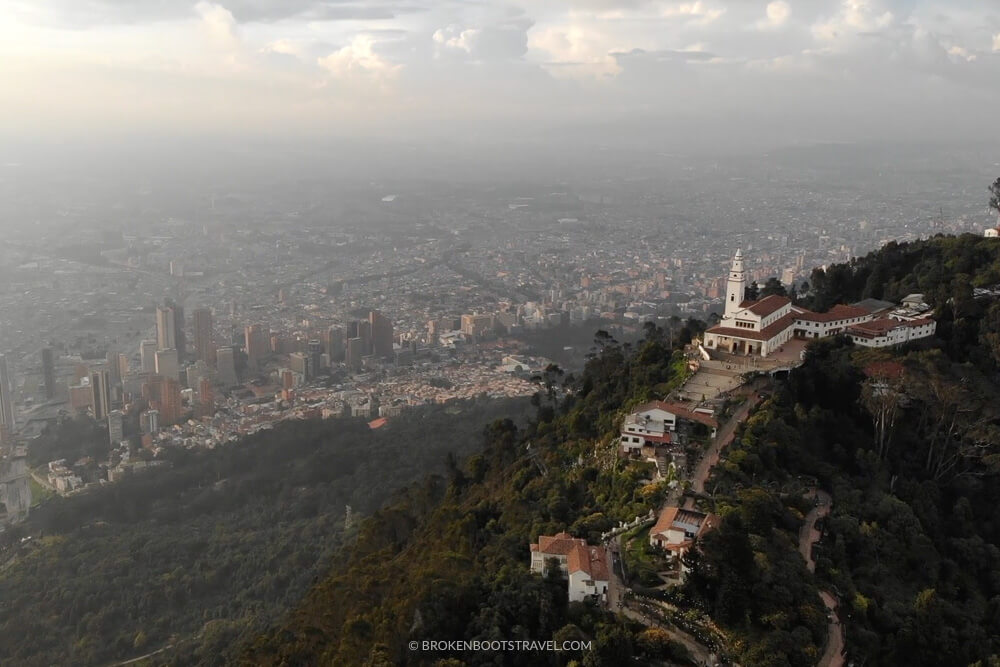
High above the cityscape, Monserrate Mountain is an icon of Bogota. This peak is home to extraordinary skyline views as well as is a central piece of the city’s story.
The peak can be accessed in three different ways – by cable car, by funicular, and by hiking. I highly recommend the hike if you’re up for it. Open from 5AM to 1PM daily, this 3km (1.8 mile) trail is completely free for visitors. It’s an uphill grade the whole way but there are plenty of stops along the route for empanadas and coffee – plus the views make the effort worth it!
If you’re not looking to hike, you can also access the peak by funicular or cable car. The funicular operates in the morning and the cable car in the afternoon, so make sure to plan your trip accordingly if you have a preference. Tickets can be purchased from the office at the base of Monserrate Mountain. Click here for the most up-to-date prices and timings.
Take a Street Art Tour
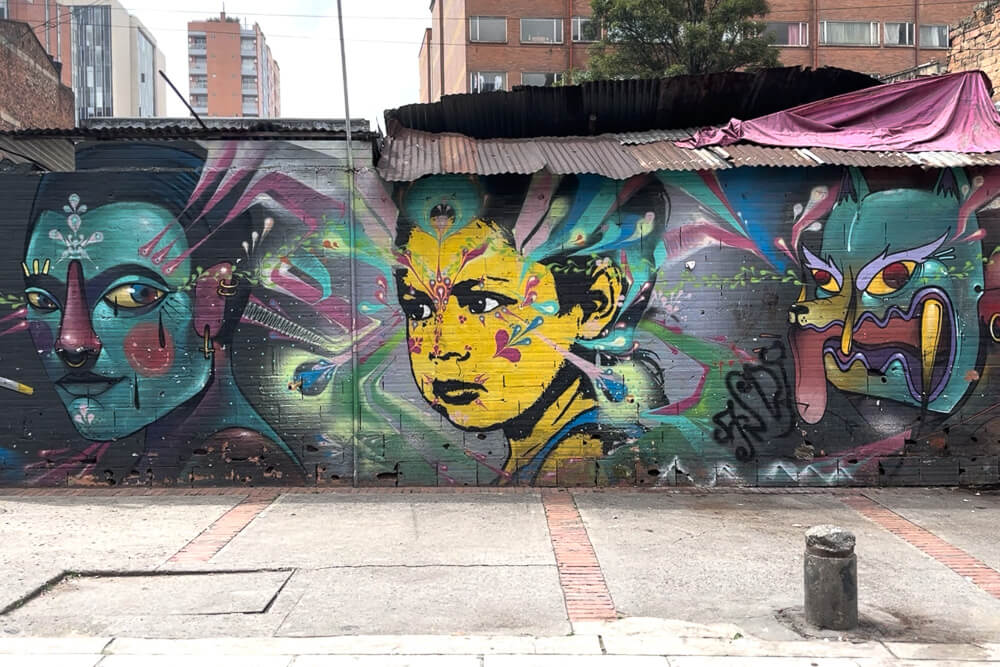
Bogota is a city known for its street art, with the movement exploding in recent years thanks to a growing movement amongst artists in the city. While the city is covered in color from head to toe, one of the most notable areas for art lovers is the La Candelaria neighborhood, home to some of Bogota’s most iconic murals.
If you’re staying in the area, you could easily spend an afternoon wandering the colorful streets of La Candelaria, though I highly recommend adding a guided graffiti tour to your Colombia itinerary to learn about the history and significance of street art in the city. From local legends to Justin Bieber’s role in the street art movement (yeah–you heard that right!) there is a long and complex history to this colorful city.
Bogota Graffiti Tours offers a free 3-hour walking tour every day at 10AM and 2PM, though tips are highly encouraged. If walking isn’t your style, check out this Urban Art Bike Tour to explore the street art while embracing your inner bike-loving Colombian.
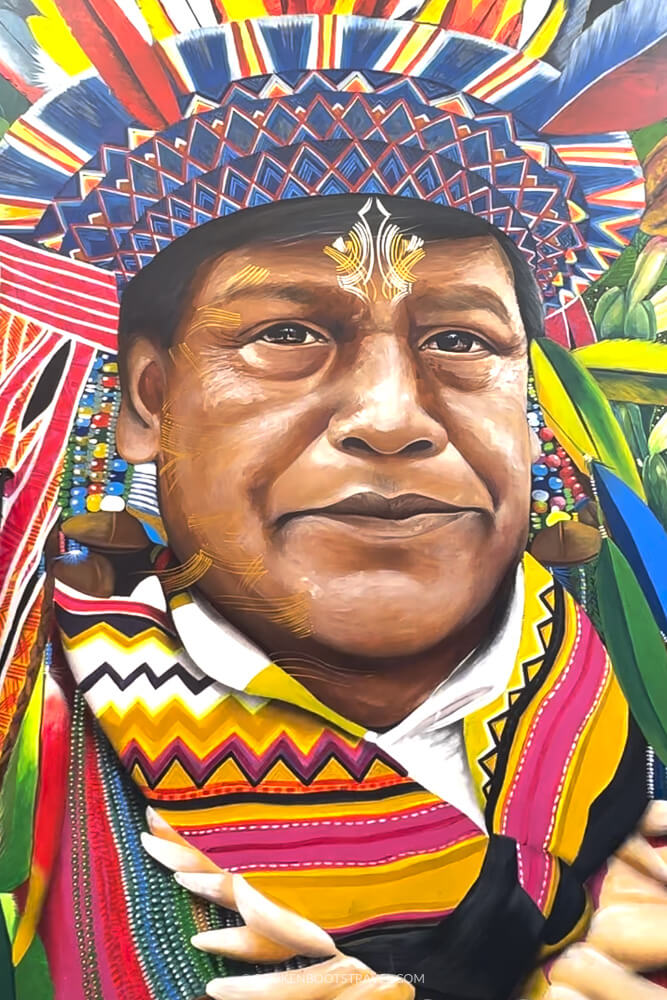
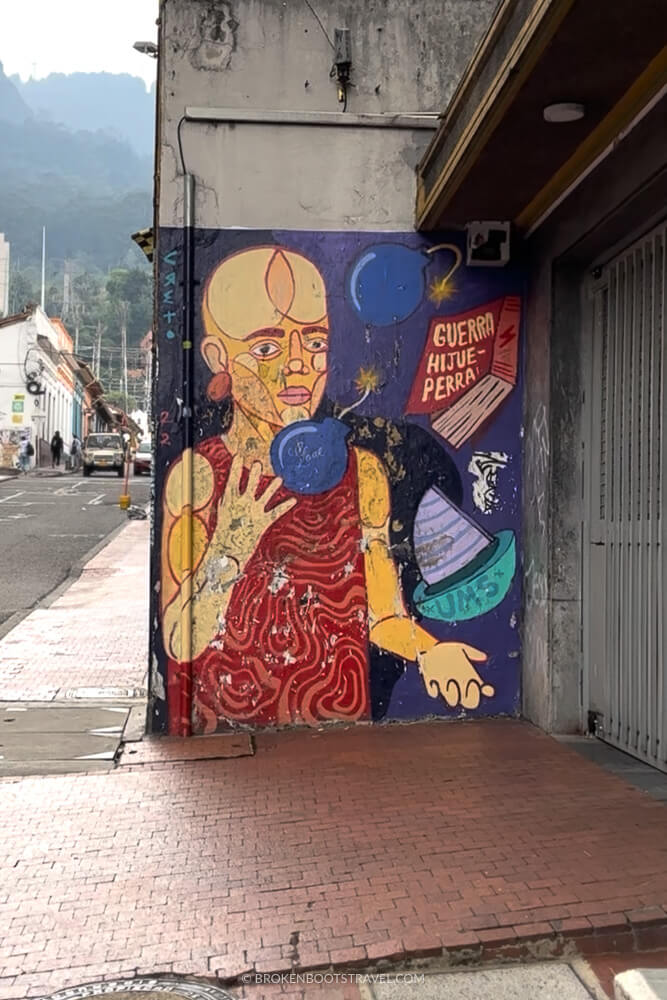
Day 3: Cundinamarca Day Trip
While Bogota is the capital city of Colombia, it’s also the capital of the department of Cundinamarca, located in Colombia’s beautiful central Andean region. As the former capital of the indigenous Muisca civilization, it’s a region full of history to explore.
You can easily visit Guatavita independently as a day trip on your Colombia itinerary. From Bogota’s Portal del Norte bus terminal, catch a ride to the town of Guatavita, which takes about 1.5-2 hours. Make sure to leave early to allow yourself ample time to explore the region when relying on public transportation.
QUICK TIP: Cundinamarca is also one of the most popular places to celebrate Christmas in Colombia! If you’re visiting in December, it’s worth a few extra days to explore some Colombian Christmas traditions. Check out this video all about it!
Explore Guatavita Town
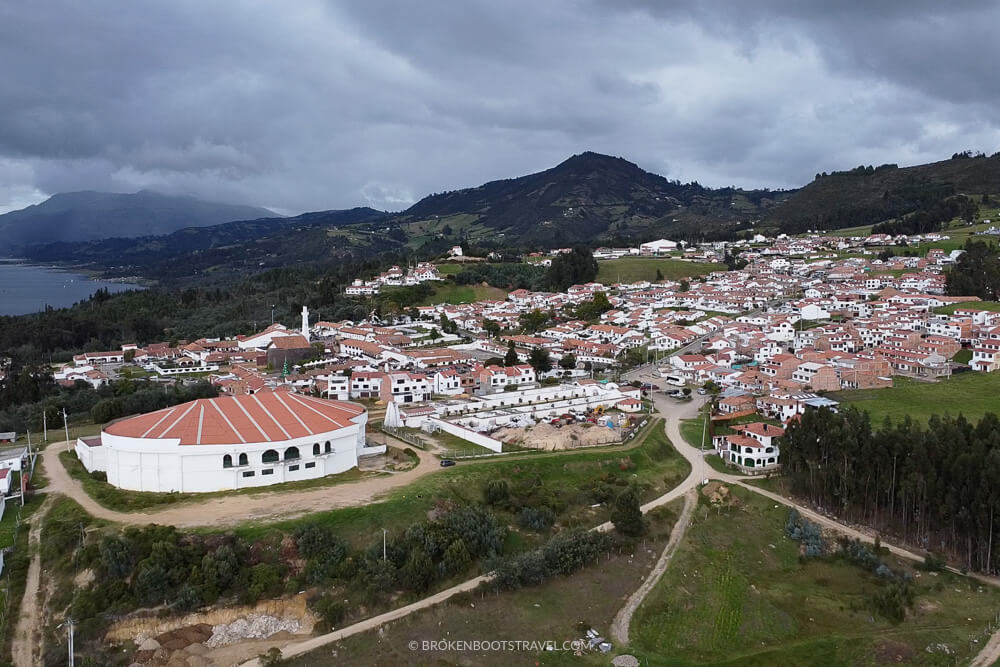
Located an hour and a half north of Bogota is the colonial town of Guatavita. Located on the banks of the Tomine Reservoir, this is actually the second iteration of the town – the first was actually submerged under the reservoir in the 1960s!
The town is still certainly worth a visit, built in the colonial style and home to a number of artisanal shops. Pick up a ruana, a thick knit poncho typical of the area, and pay a visit to the museum in town to learn the history of this extraordinary region and its surrounding legends.
Visit Laguna de Guatavita
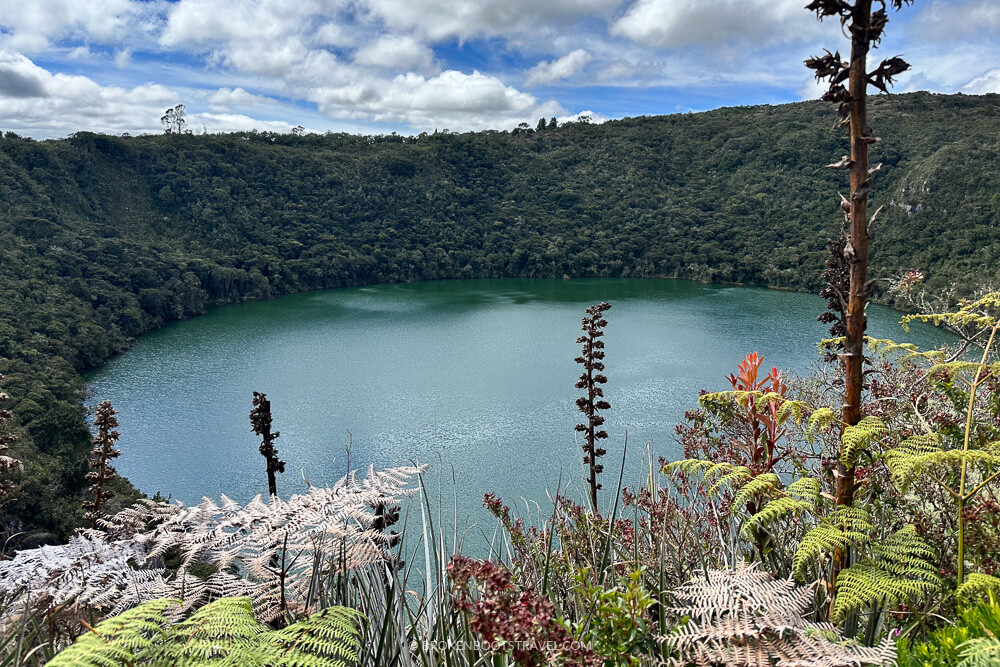
From the central plaza of Guatavita you can hire roundtrip transportation to Laguna de Guatavita – a crater lake home to the origin of the legend of El Dorado. There are vans that leave around 11AM and 1PM daily, though you can also inquire about private transportation from one of the many taxis in town.
Laguna de Guatavita is located about 30 minutes from Guatavita town. Guided tours operate on the hour and take you through the protected reserve, where you’ll learn about the life and legends of the Muisca indigenous people along the way, including their sacred plants, ceremonies, and religious beliefs.
Finally, you’ll summit the crater and peer into the turquoise waters of Laguna Guatavita. The lake was sacred to the Muisca people and home to an ancient ritual for the water god Chie. The leader of the Muisca, or the Zipa, would be adorned in gold dust and paddle onto the lake on a raft. From the raft, he and other chiefs would throw gold into the lake as an offering to the gods.

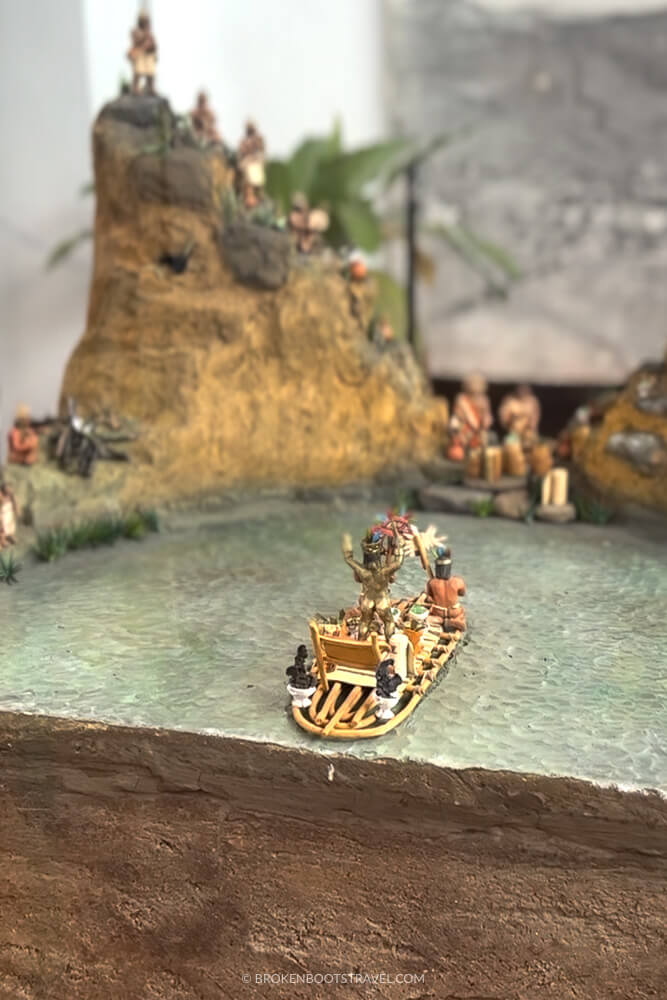
This ritual is what gave way to the Spanish legend of El Dorado – believed to be at the bottom of Laguna de Guatavita.
Laguna de Guatavita is open from 8:30AM-4:00PM Tuesday through Sunday, closed on Mondays. Tickets cost 25,000 COP ($6.50 USD) for foreigners, 18,000 COP for Colombian nationals.
Don’t want to DIY? Check out this guided tour of Laguna Guatavita leaving from Bogota, which also includes a stop at the Zipaquira Salt Cathedral.
Days 4-6: SALENTO
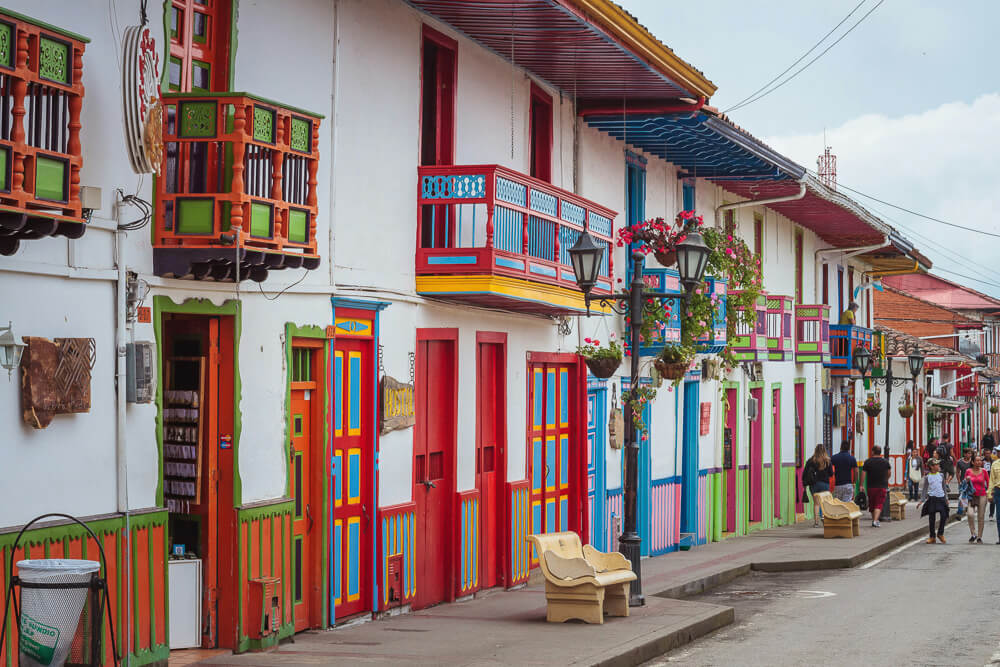
Salento is the main backpacker hub of the eje cafetero and a great place to get to know Colombia’ coffee region. Known for its colorful architecture (some argue it inspired Encanto!) it’s a coffee-lover’s dream, with cafes on every corner and lush green hills spotted with coffee plants. It’s also the gateway to the Valle de Cocora – home to the tallest palm trees in the world!
Don’t want to DIY? Check out the best of Salento on Get Your Guide:
Where to Stay in Salento
From budget hostels to colorful fincas, you don’t have to spend a lot to get epic views of the coffee region! While most travelers will opt to stay in the town of Salento itself, there are also a number of unique options in the region – from glamping to staying on a coffee farm! Here are some top lodging options in and around Salento.
🌳 Terrazas de Salento – Cozy lodge with terraces overlooking the coffee fields
🎒 Viajero Salento – Popular hostal chain great for backpackers
☕️ Coffee Tree Boutique Hostel – Boutique hostel built in a traditional finca
🌿 Ecohotel Piedemonte – Ecohotel with views of the town of Salento
Explore all accommodation in Salento on Booking.com
How to Get from Bogota to Salento
BY BUS | From Bogota, take a bus to the cities of Armenia (recommended) or Pereira. Driving time is around 9 hours. From the terminals in Armenia or Pereira you can find daily buses to Salento with a driving time of around 1 hour.
🚌 Click here to book your bus to Armenia
BY PLANE | From the El Dorado International Airport, fly to Armenia (recommended) or Pereira. Flying time is about 45 minutes. From either city, you’ll have to navigate to the bus station and take a 1 hour bus to the town of Salento.
✈️ Click here to book your flight to Armenia
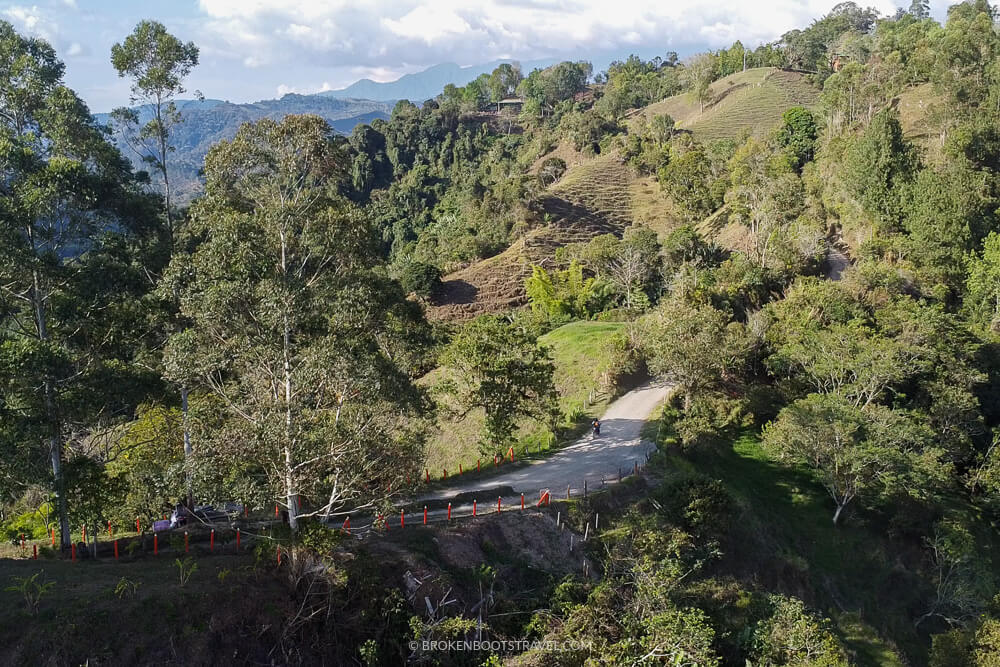
Day 4: Travel to Salento
The bus ride from Bogota to Salento is an adventure itself. Watch the rolling hills of the coffee region pass by as you wind your way through the Andes and don’t forget to sample coffee at every roadside stop.
However, if you’re short on time during your 3 week Colombia itinerary you might want to consider flying between the destinations, or taking the journey as an overnight bus trip to maximize your time in the town of Salento. After all, there’s a reason it’s considered one of the best towns in Colombia’s coffee region.
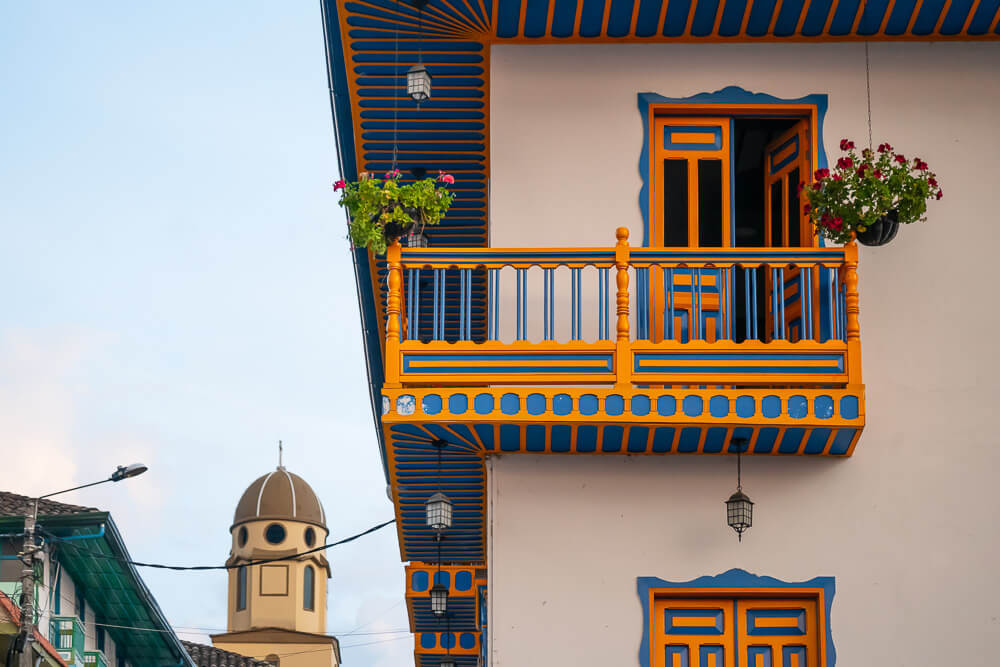
Once you’ve made it to Salento, unwind after a long travel day with a meal at the Recinto Gastronómico Artesanal, a traditional food hall off the main square offering a number of Colombian specialities, from fresh trucha to agua panela con queso. This is a great place to try bandeja paisa – a platter loaded with beans, plantain, avocado, chicharron, and more, typical of this region.
If you still have the energy, visit Los Amigos for a game of Tejo. This game comes from Colombia’s Andean region and involves throwing heavy metal discs at packets of gunpowder buried in mud – trust me, you’ll just have to try it!
Enjoying the coffee region? Check out my full one-week itinerary in Colombia’s coffee triangle!
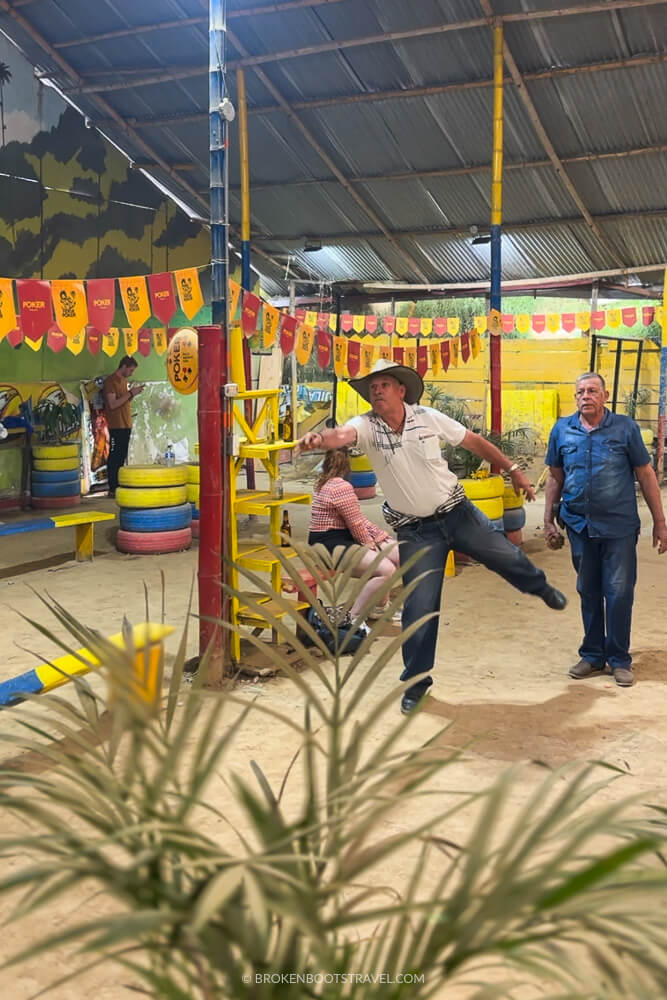
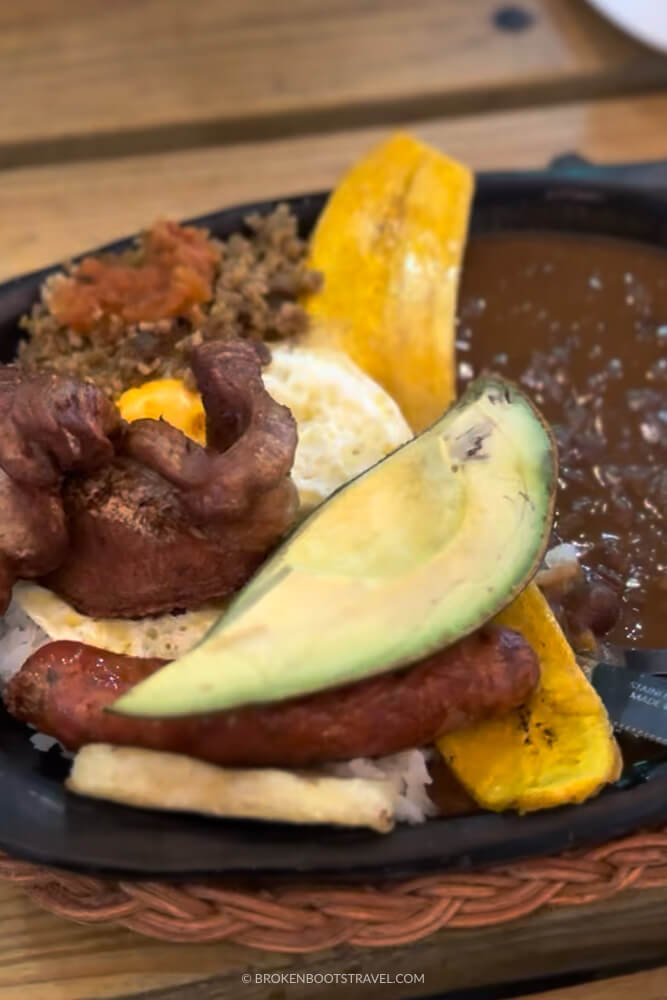
Day 5: Valle de Cocora
Spend your first day in Salento among the Palmas de Cera (Wax Palms) of the Cocora Valley. This valley is home to the largest number of palmas de cera in the world, a refuge for the towering national tree of Colombia. It’s one of the most incredible things to see in the entire country and a must-see on any Colombia itinerary.
Ride a Jeep Willy
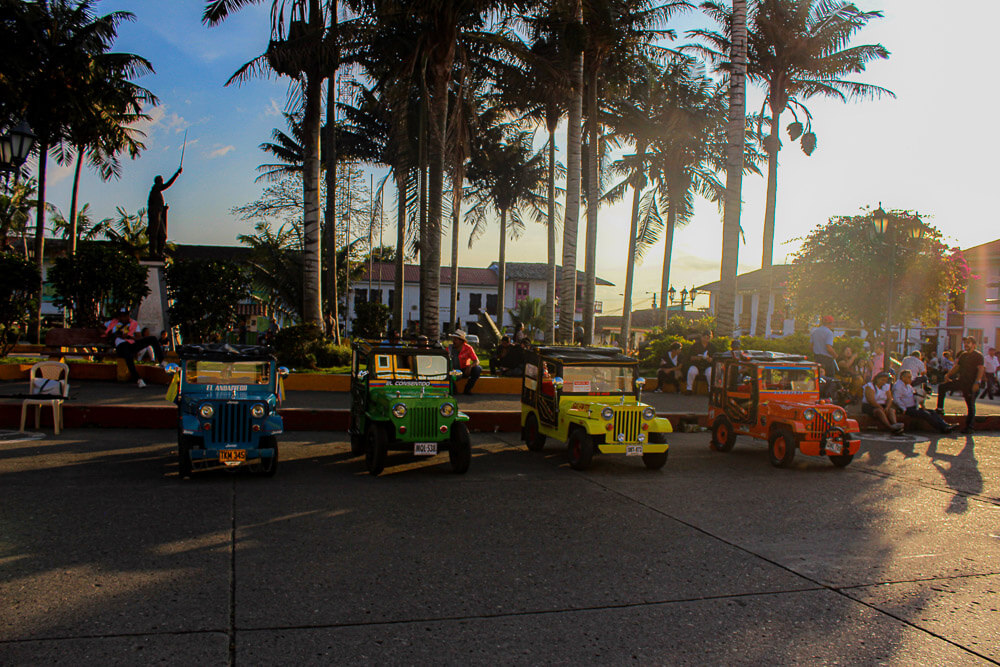
The best way to get to the Cocora Valley is on the back of a Jeep Willy. Many of these cars were imported to Colombia from the US in the 1940s, but they have now become a staple of the coffee region!
The Jeep Willys congregate around Salento’s main plaza and leave when full. Tickets cost 8,000 COP ($2 USD) round-trip and can be purchased at the ticket booth in the main square. Make sure to hold on to your ticket, because you’ll be asked for it on your way back to Salento later on.
Once you’re packed in like a sardine (or hanging onto the back for dear life) the ride from Salento to Valle de Cocora takes about 30 minutes, with epic views the whole way.
Hike El Bosque de Las Palmas
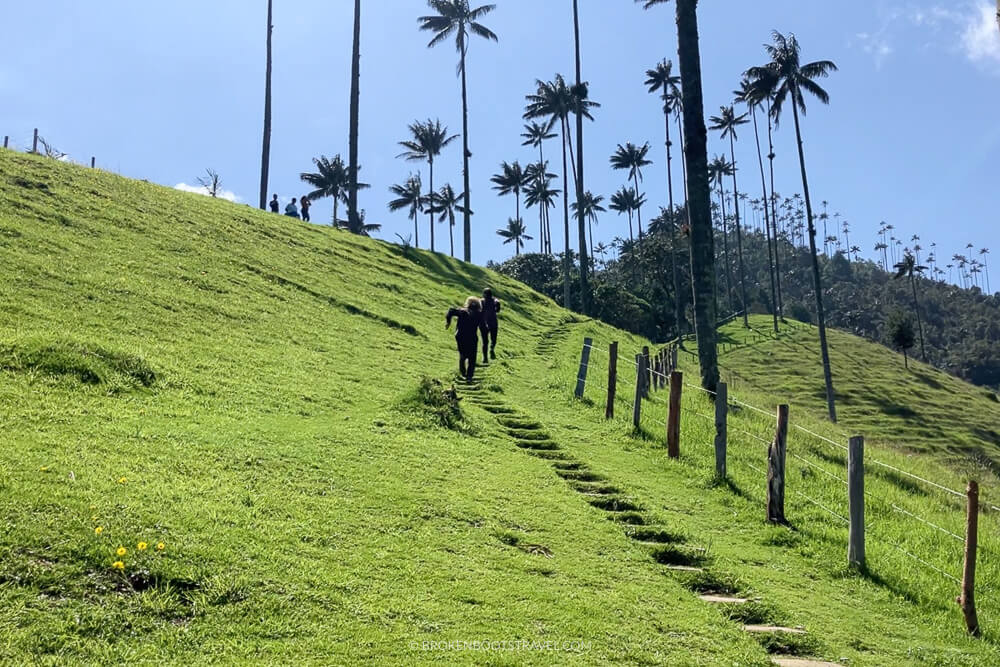
Home to the towering Palmas de Cera, the Valle de Cocora is one of the most unique landscapes in the world. There are plenty of ways to explore the Cocora Valley, but one of the most popular trails is El Bosque de Las Palmas, or the Palm Forest.
This 4.2km circular trail begins alongside a field of towering palm trees. The trail is uphill but at a gentle grade and you’ll have stunning views into the valley the whole time. At the halfway point you’ll find Finca de la Montana, where you can stop for a quick coffee, snack, or bathroom break.
From this point, many hikers choose to return the way they came (an out-and-back hike) or continue down the loop trail. The second half of the trail wanders through the forest where you’ll find hanging bridges and plenty of colorful birds. Finally, the trail will drop you back at the main entrance to the valley where you can find a Jeep Willy back to Salento.
Day 6: Exploring Salento
On the second day in Salento, dive fully into coffee culture with a trip to one of the many coffee farms in the region. There are plenty to choose from, each with their own distinct personalities and flavors to offer. However, no matter which you choose, make sure to start your day in Salento with a cup of tinto for good measure.
Visit Finca Buenos Aires
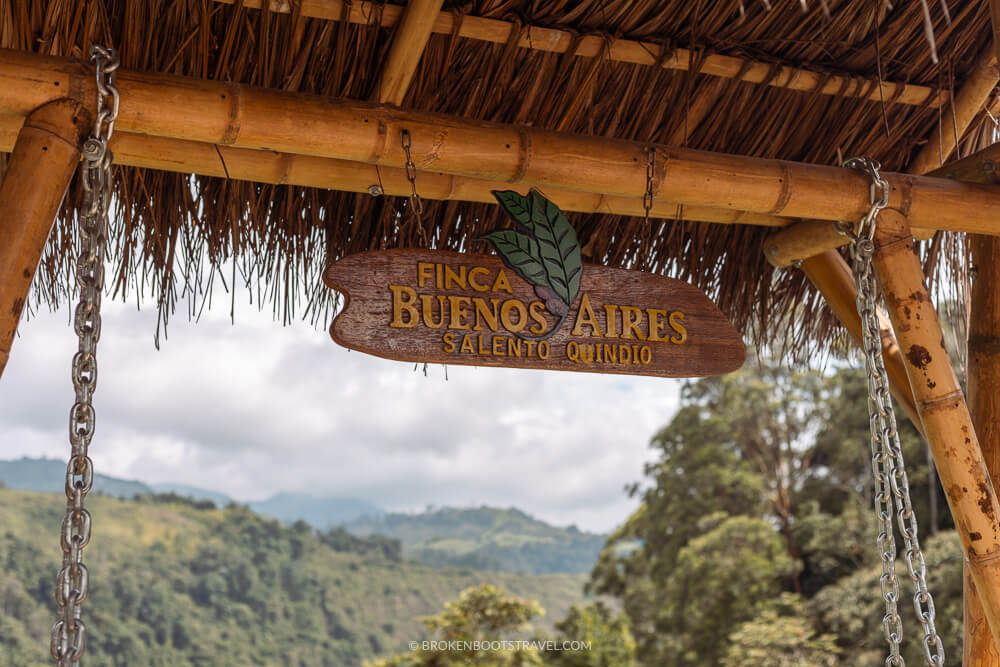
My personal favorite coffee farm in Salento is Finca Buenos Aires. You can catch a Jeep Willy to the finca from Salento’s central plaza for 8,000 COP ($2 USD). The finca operates tours in English and Spanish every hour, costing 40,000 COP ($10.50 USD) per person.
The tour takes visitors through the entire coffee process from planting to cultivating to brewing the beans. Finally, you’ll get a chance to taste coffee grown right on site. You can see what it’s like to spend a day as a coffee farmer in my Quindio video!
Other popular fincas in the area are Finca El Ocaso and Finca Don Eduardo. Check out my guide to all the best coffee fincas in Salento to decide which one is best for you.
Santa Rita La Cascada
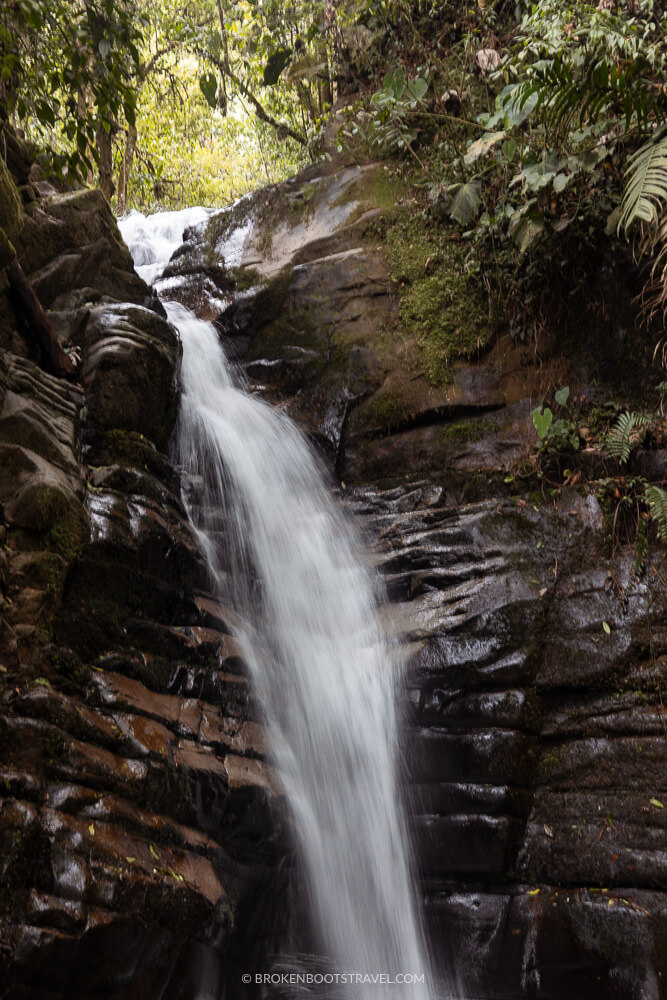
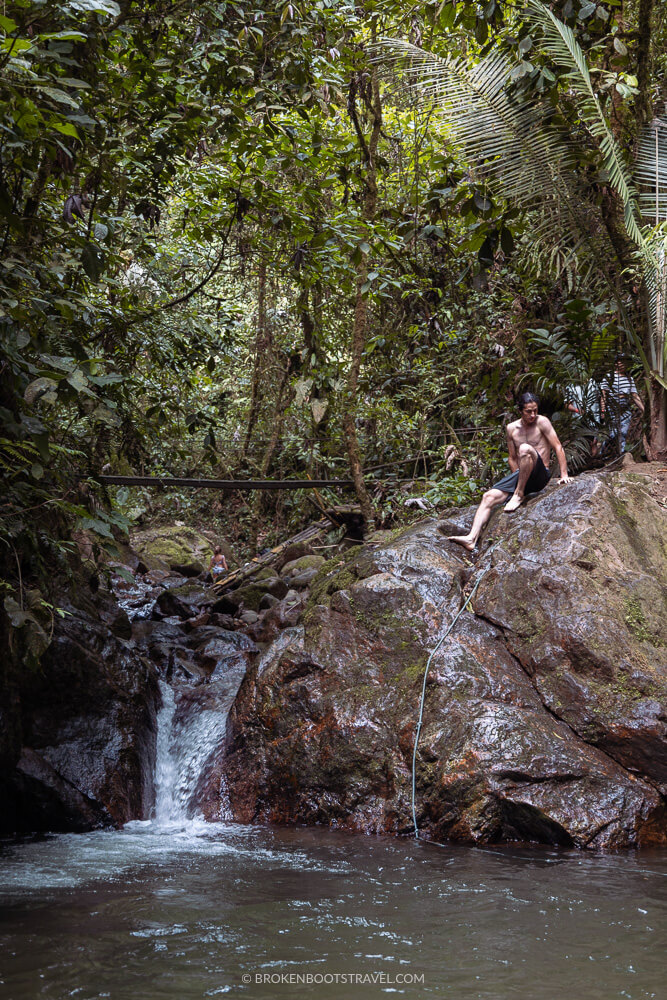
Just outside the town of Salento is the Santa Rita Nature Preserve, a great place to spend an afternoon out in nature. The reserve is home to three different cascades, plus a large number of colorful bird species that call the eje cafetero home.
You can easily access the nature reserve via a taxi from Salento or via public transportation. Simply hop on a bus headed towards Armenia and ask the driver to drop you at Santa Rita. To return to Salento later, simply catch a bus on the main road heading back to Salento.
Entrance to Santa Rita costs 15,000 COP ($4 USD) per person. At the entrance you’ll find a colorful finca, where you can also purchase snacks, coffee, or even full meals, perfect for after an afternoon at the waterfalls!
Days 7-10: MEDELLIN
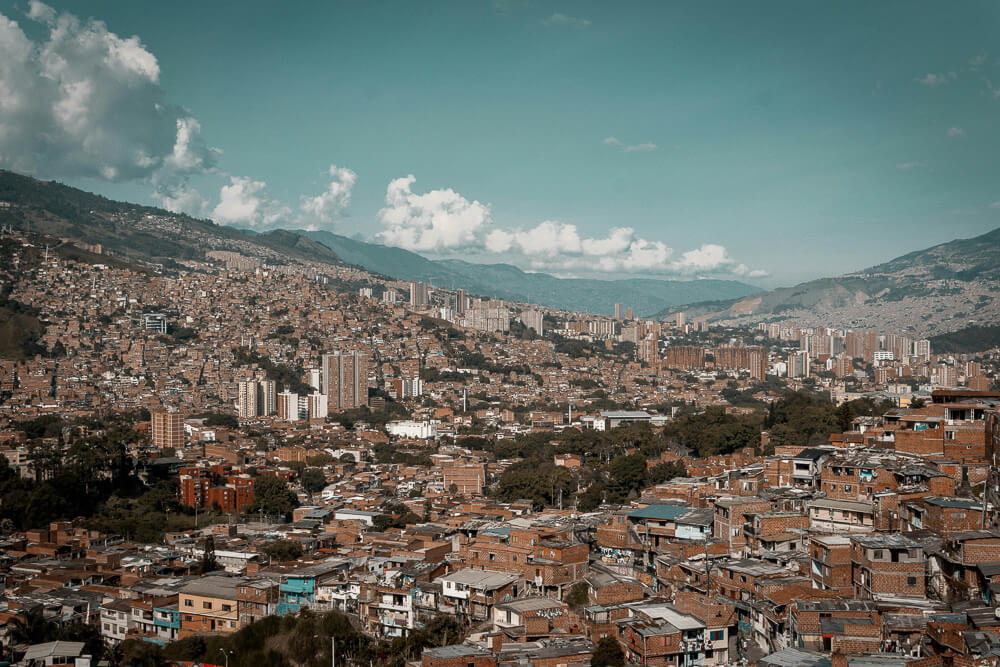
Colombia’s second-biggest city, Medellin, has certainly made a name for itself as a cultural center of Colombia. Nicknamed “the city of eternal spring” for its year-round good weather, the city draws Colombians and foreigners alike for its art, food, and energy. It’s a must-visit city on any Colombia itinerary.
Don’t want to DIY? Check out the best of Medellin on Get Your Guide:
Where to Stay in Medellin
The most popular areas for travelers in Medellin are the neighborhoods of El Poblado and Laureles. El Poblado is most definitely the “digital nomad hub,” due to its large number of cafes, restaurants, and co-working spaces. Laureles has been called the “coolest neighborhood in Medellin” thanks to its colorful murals and yoga studios. Here are a few recommended accommodations in Medellin:
✨ Medellin Vibes Hostel – Cozy backpacker hostel in Laureles with a pool, garden, and more!
🏡 Hostal Casa Mosaiko – Eclectic hostel located in a modern home in Laureles
🌸 Duo Boutique Hotel – Modern and luxurious hotel located Laureles neighborhood
🐬 Rango Hostel Boutique – Boutique hostel in El Poblado with rooftop pool views
Explore all accommodation in Medellin on Booking.com
How to Get from Salento to Medellin
BY BUS | From Salento, there are direct buses to Medellin that take around 8 hours. Buses leave 4 times a day and cost around 75,000 COP ($20 USD).
🚌 Click here to book your bus to Medellin
BY PLANE | From Salento, take a bus to Pereira (recommended) or Armenia. From either city, take a direct flight to Jose Maria Cordova Airport, flying time of around 40 minutes.
✈️ Click here to book your flight to Medellin
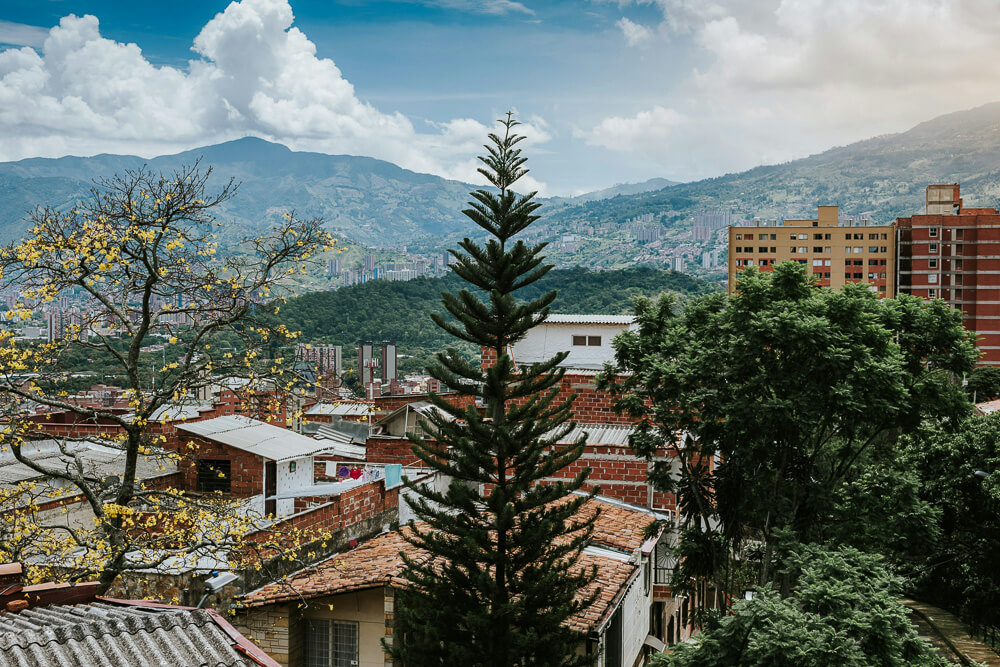
Day 7: Travel to Medellin
Buses from Salento to Medellin take around 8 hours, so if you’re looking to save on time, a night bus can give you an extra day in the city. If you do opt for the day bus, you’ll have an opportunity to see the changing coffee landscape around you as you wind your way through the Andes to “the city of eternal spring.”
Medellin is known as “la ciudad de primavera eterna” for its year-round mild weather, making it the perfect city to explore on foot. If you opted for the night bus, one of the best things you can do on your first day in Medellin is the Free Walking Tour by Real City Tours. Led by a local, you’ll have a chance to learn about the culture, history, and legends of the city.
If you’re looking for a more laid-back approach to your first day, Medellin’s El Poblado neighborhood is the coffee and cafe hub of the city. It’s a great place to spend an afternoon wandering and grab a bite to eat in the city – I recommend Mondongo’s, a Medellin staple!
Day 8: Medellin Day 1
On the first official day exploring Colombia’s second city, make sure to grab an arepa de choclo for breakfast! These fritters are made with choclo, a large, sweet corn grown in the Andes, and often smothered with butter and cheese.
Explore Comuna 13
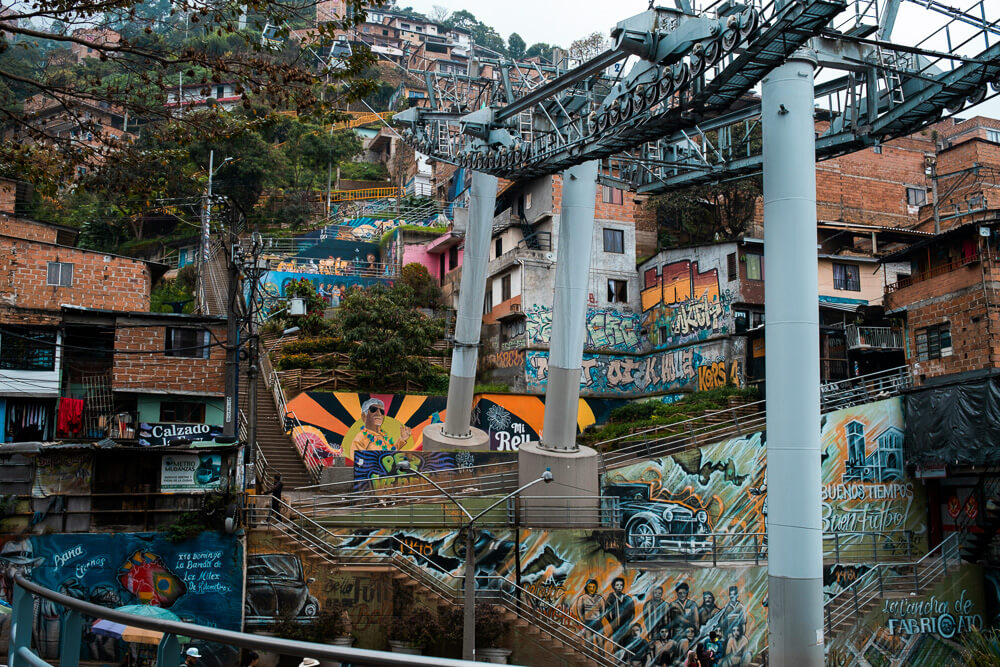
Comuna 13 was once considered one of the most dangerous neighborhoods in the world, overrun by crime and violence. During the 1980s, the hillside barrio was a hub of guerillas, paramilitaries, and a central point of the drug trade in the city.
However, beginning in the 2000s, a number of social and infrastructure projects began in the neighborhood, with a distinct focus on art and culture. A cable car was constructed, connecting the neighborhood with the rest of the city, and many local artists turned to the walls of Comuna 13 to paint murals for social change.
These days, Comuna 13 is one of the most colorful neighborhoods in the city, but also stands as a living testament to Colombia’s transformation. It’s a must-see on any trip to Medellin, though I highly recommend going with a local guide to best understand the history and stories of the neighborhood.
Visit Parques Del Río
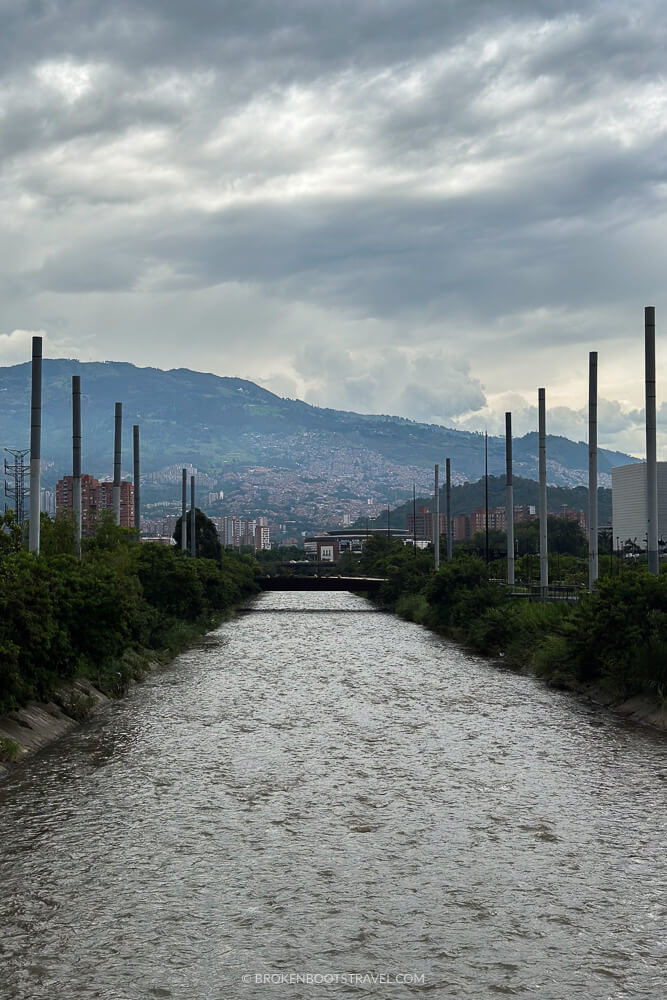
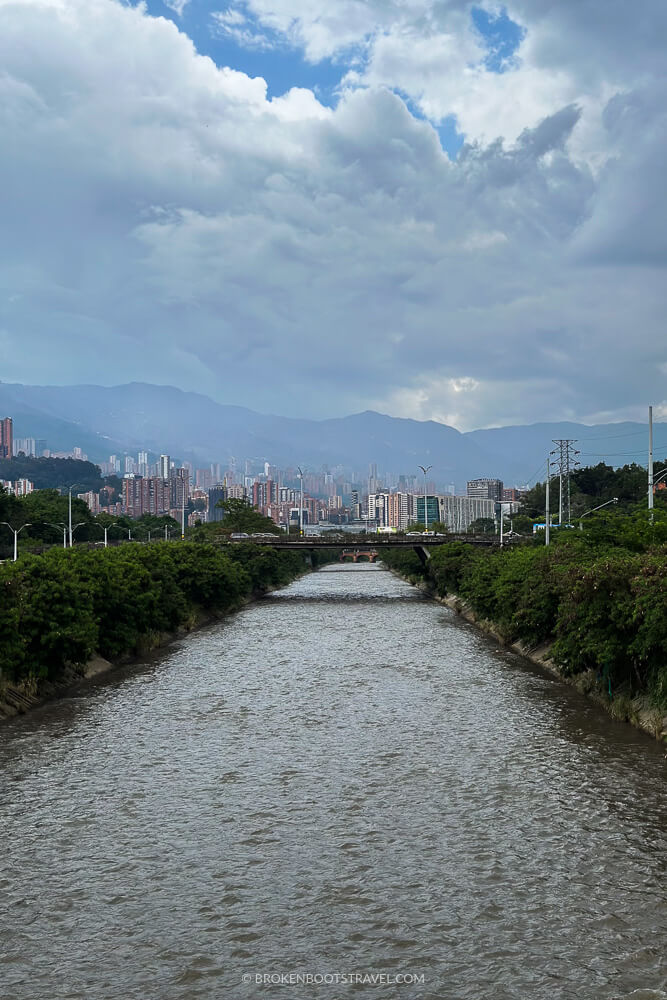
Located alongside Medellin’s River, Parques del Río is the heart and soul of the city. The park was built as an initiative to integrate green space into the city, and is now home to over 71,000 square meters of public green space. You’ll see people out and about at all times of day, cycling, roller skating, playing guitar, you name it!
The park lines the Medellin River and offers beautiful views of the city. For even better views, walk along the park to the Nutibara Hill to visit Pueblito Paisa, a miniature Antionqian town. The architecture might look familiar to that of Salento in the eje cafetero!
Nutibara Hill also offers some of the best views of the city, so it’s a great place to end a long day of exploring with a cup of cafe colombiano and sunset views over the city.
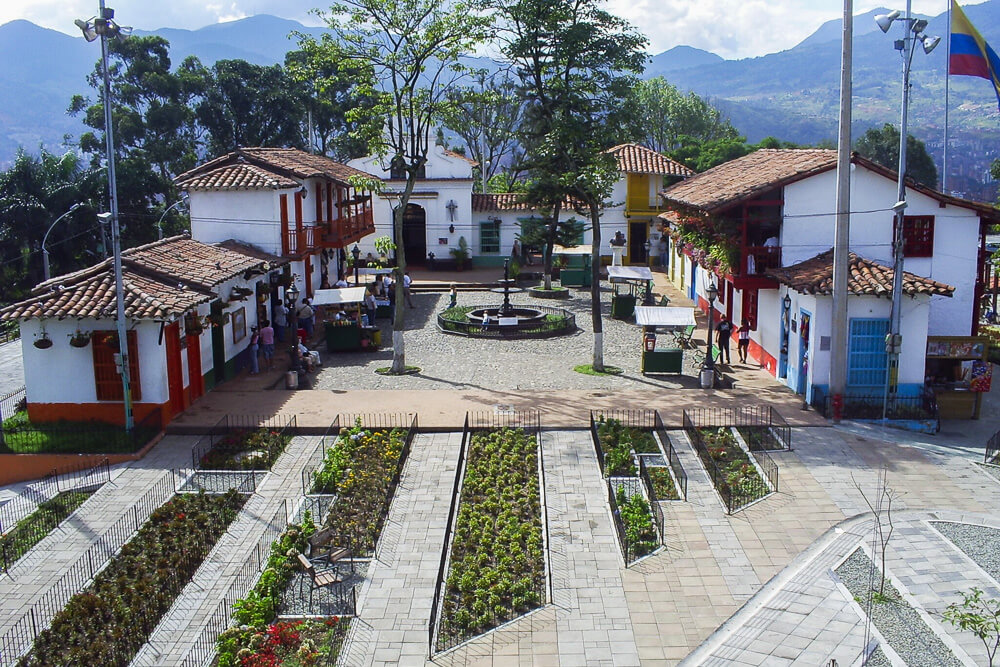
Day 9: Medellin Day 2
On the second day in Medellin, begin your morning with a cup of coffee at one of El Poblado’s many coffee shops. As the unofficial cafe-hub of the city, this is the perfect place to get a little caffeine fix before a day spent exploring Medellin. There are plenty to choose from, but a local favorite is the eclectic, colorful Pergamino.
Explore the Old Center
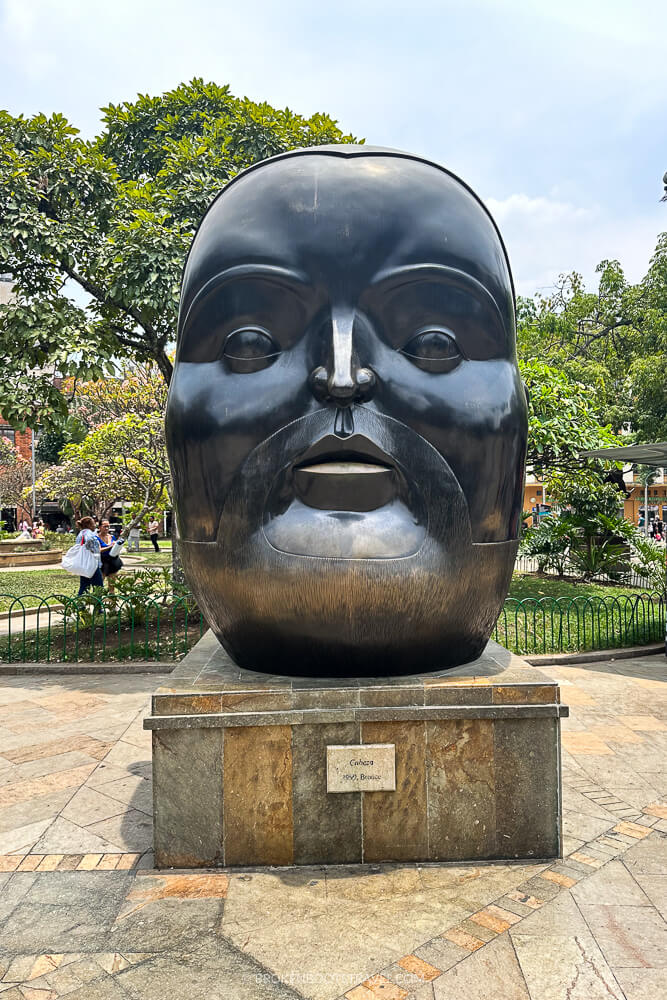
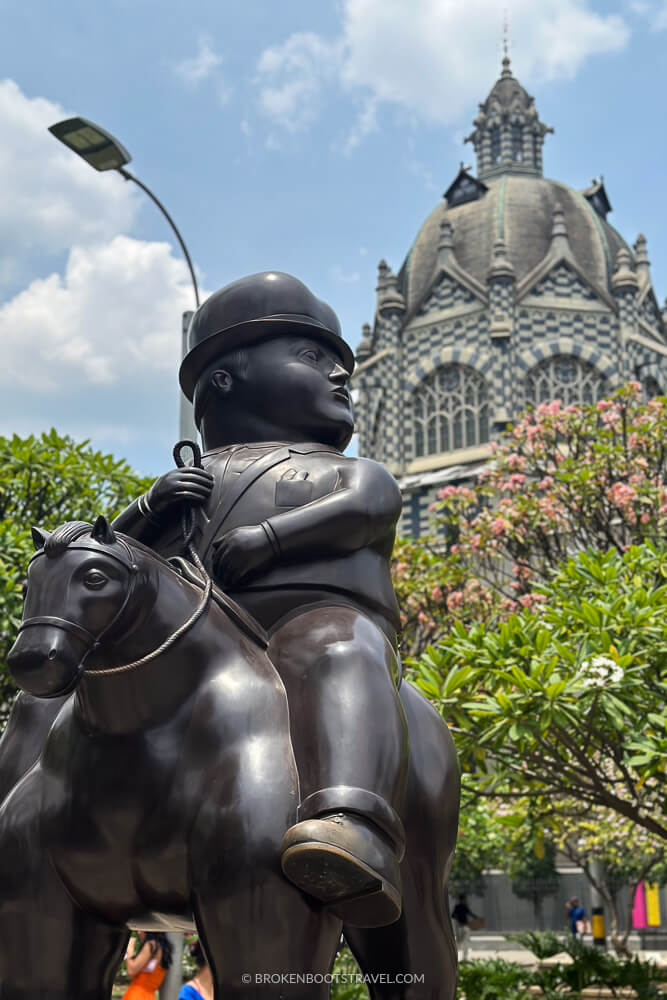
Start your explorations of Medellin’s historic center by taking the metro to the nearby Plaza Botero. This plaza is home to 23 sculptures by Medellin-born artist Fernando Botero – known for his larger than life style, which has actually coined its own term, boterismo.
The statues are located beside the Rafael Uribe Palace of Culture, a stately, black and white checkerboard building that hosts cultural events in the city. The towering spires of the building located next to the art-filled plaza are truly a sight to see. The Museum of Antioquia is also located right beside the plaza, a great place to learn more about the city and region.
There’s plenty more to see in the center, from the glowing columns of Plaza Cisneros to the barefoot features of Parque Pies Descalzos to the oldest church in the city of Basilica of Our Lady of Candelaria. It’s a great place to spend a morning and get to know the many sides of the city of Medellin.
YOU MIGHT LIKE: If you’re interested in learning more about Botero’s life and legacy, check out this Botero-focused tour of Medellin.
Visit the Jardín Botanico
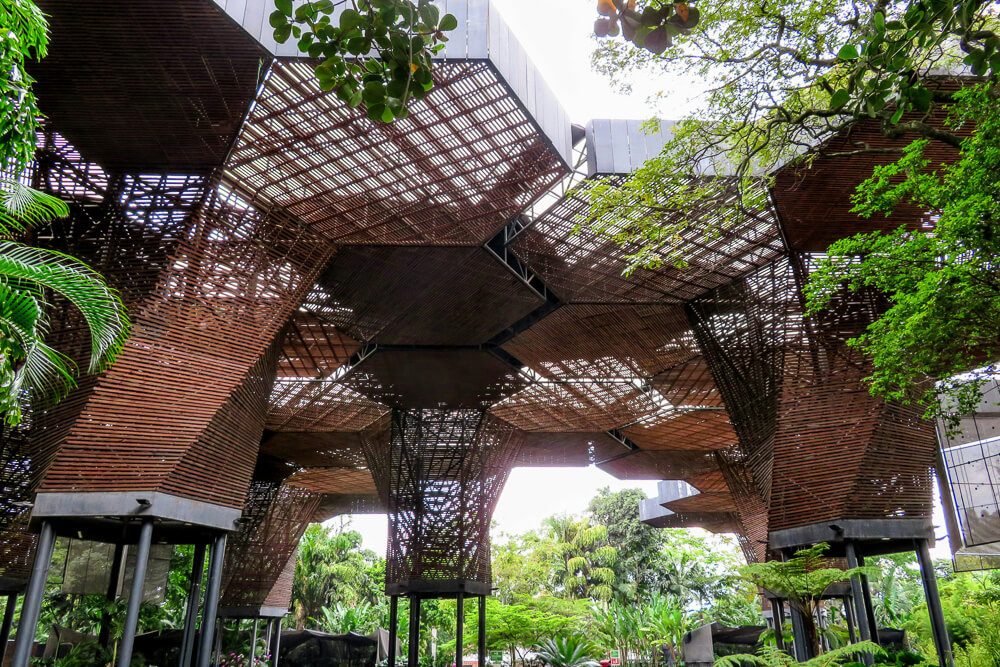
Located in the north of the city is the Jardín Botanico de Medellin, a 34-acre garden home to hundreds of birds, butterflies, and even the occasional friendly iguana! You’ll soon forget you’re in the middle of a bustling city as you explore the winding paths through the garden and it’s a great place to enjoy an afternoon picnic or an evening stroll.
The gardens are also home to a Butterfly Garden, where you can learn more about the thousands of species of butterflies that call Colombia home. Grab a bite to eat at the on-site cafe and enjoy some time away from the hustle and bustle of Medellin.
The Jardín Botanico is open from 9AM-4PM Tuesday-Sunday, closed on Mondays. It’s completely free to visit and easily accessible via the Medellin metro.
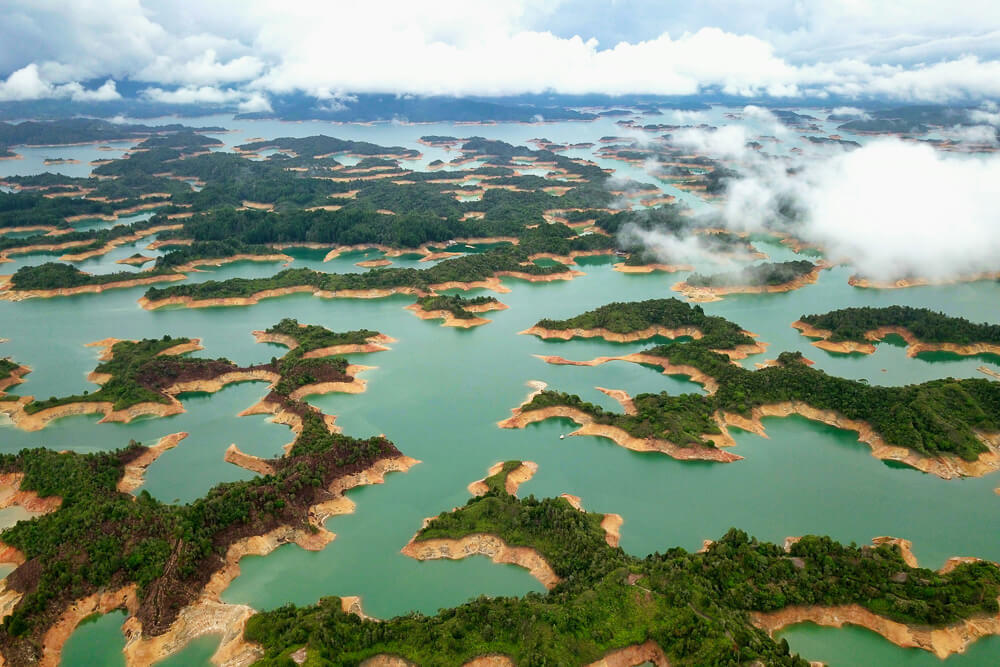
Day 10: Guatape Day Trip
An easy day trip an hour from Medellin, Guatape might just be the most colorful town in Colombia. The town leans in to the traditional paisa style, covered with intricate balconies, colorful houses, and zocalos (baseboards covered with painted images)
It’s easy to visit Guatape independently from Medellin. Take the Medellin metro to Terminal del Norte, then find buses traveling to Guatape. There are multiple agencies that offer tickets, usually ranging between 15,000-20,000 COP. You can also sign up for a day tour of Guatape with transportation included.
Explore Guatape Town
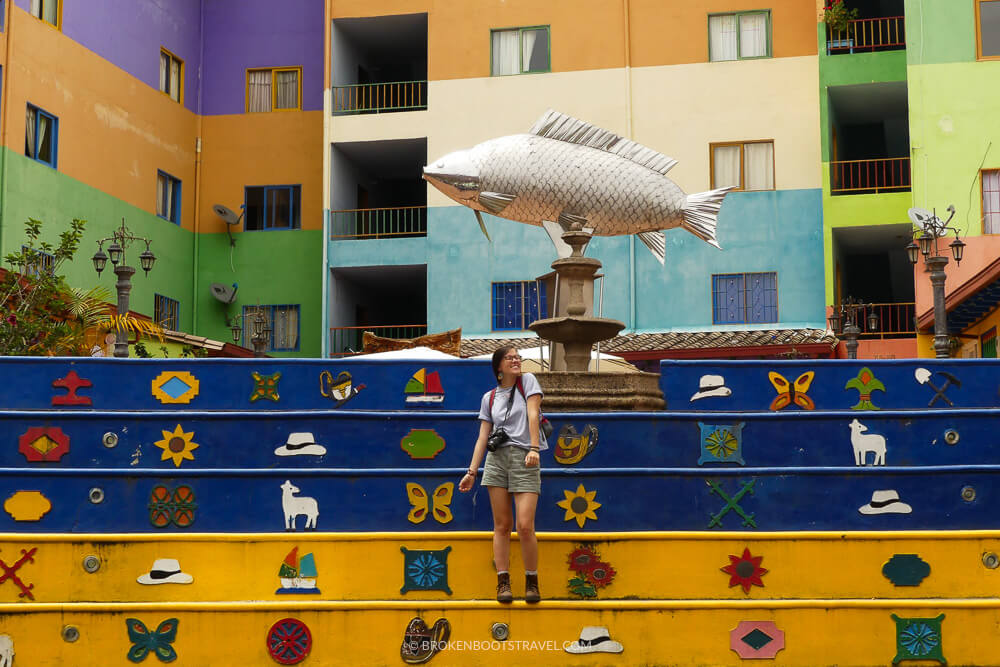
Begin a day in Guatape at Calle del Recuerdo, often considered the most colorful street in town. It’s best to get there early to beat the crowds so you’ll have the cobblestone street all to yourself for prime photo opportunities.
Afterwards, head to the Plazoleta el Zocalo, a colorful square surrounded by intricate zocalos, telling the stories of the region. Locals in town have been crafting the zocalos since the early 20th century, and these days the tradition continues all over town.
The streets of Guatape are filled with shops selling artisanal handicrafts, so it’s easy to spend the morning wandering around town shopping, people watching, and admiring the beautiful architecture.
Hike El Peñol de Guatape
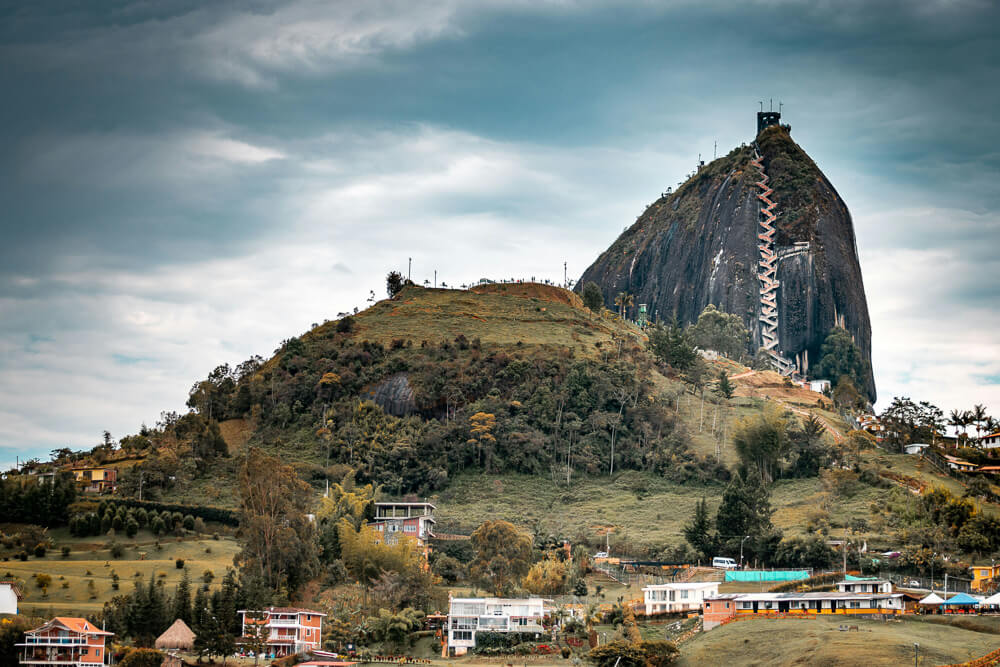
Located just outside Guatape town is the Peńol de Guatape, a towering monolith with incredible views over the town and nearby reservoir. Buses regularly run from the central plaza of town to the Peñol and take around 25 minutes.
Entrance to the peñol costs 20,000 COP. To get to the top, you’ll have to summit 740 steps, so consider grabbing a bottle of water before attempting the feat. However, once you’ve made it to the top, you’ll be rewarded with stunning views of the surrounding reservoir and can even celebrate with a mango michelada before heading back to Medellin.
Days 11-12: SAN GIL
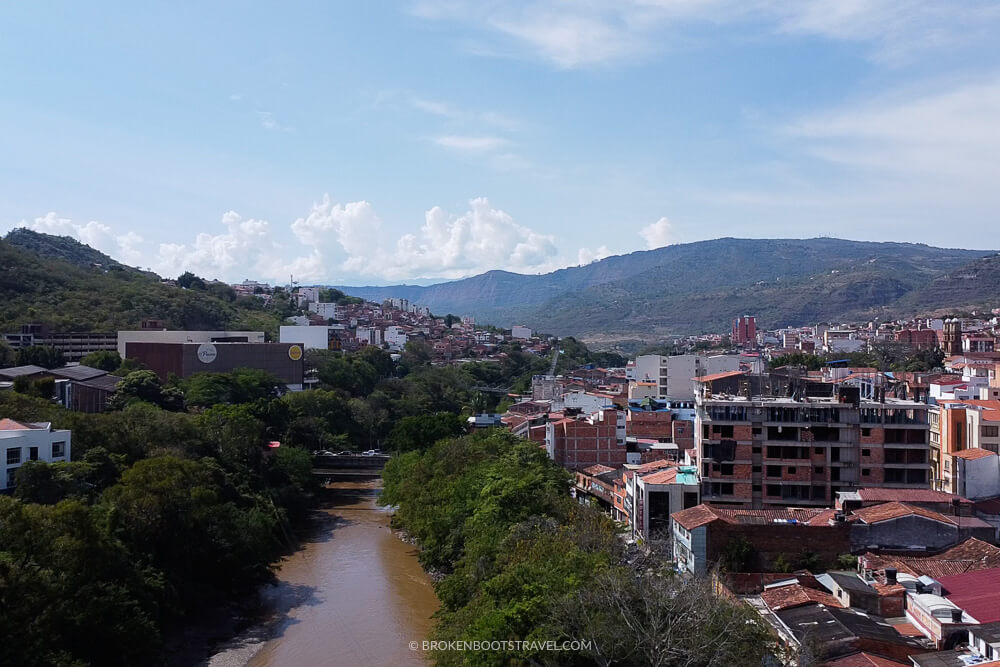
As the adventure capital of Colombia, San Gil draws visitors for its extreme sports – from bungee jumping to river rafting. But adrenaline-pumping activities aren’t all you’ll find in this mountain town – it’s also home to Colombia’s largest canyon, most beautiful town, and a cradle of Colombian history.
Don’t want to DIY? Check out the best of San Gil on Get Your Guide:
Where to Stay in San Gil
There’s really no preferred place to stay in San Gil – the entire town can be covered in about 20 minutes! From budget-friendly hostels to more traditional hotels, there’s a wide range of accommodation to choose from. However, some travelers may choose to stay slightly outside the town itself for a more laid-back feel. Here are some top accommodation options in San Gil:
🌲 Hotel Campestre La Trinidad – Cozy hotel with terrace, pool, on-site restaurant and more
⭐️ Sam’s VIP Hostel – Centrally located hostel with privates and dorms available
🚪 Green Door San Gil – Popular social hostel, great for backpackers
⛰️ Meraki Boutique Hostel – Boutique hostel in a traditional guest house
Explore all accommodation in San Gil on Booking.com
How to Get from Medellin to San Gil
BY BUS | From Medellin, take a bus to Bucaramanga. Driving time is around 8 hours. From the Bucaramanga Terminal, take another bus to the town of San Gil, driving time of around 3 hours.
🚌 Click here to book your bus to Bucaramanga
BY PLANE | From Jose Maria Cordova International Airport, take a direct flight to Palonegro Airport (Bucaramanga). Flight time is around 45 minutes. From Bucaramanga, you can fly to the Los Pozos Airport outside San Gil, or take a bus to San Gil.
✈️ Click here to book your flight to Bucaramanga
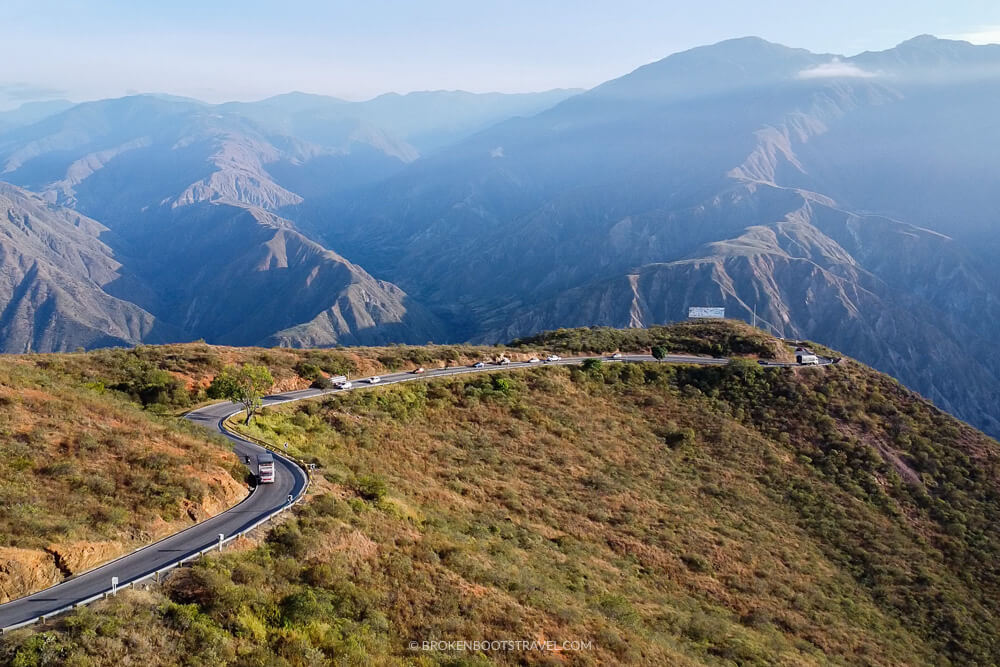
Day 11: Travel to San Gil
There’s no quick way to cover the ground between Medellin and the Colombian coast, but Colombia’s adventure capital of San Gil is conveniently located right in the middle. If you’re wanting to completely maximize your time, I recommend taking a night bus from Medellin to Bucaramanga before heading to San Gil. You can even opt to spend the morning getting to know a little of Bucaramanga before heading onwards.
Whether you opt to overnight or fly to Bucaramanga, I highly recommend taking the bus from Bucaramanga to San Gil. Along the way, you’ll pass along the Chicamocha Canyon, the largest canyon in Colombia and the second largest in the world! It’s an extraordinary sight to see and one of Colombia’s most unique natural features.
Once you arrive in San Gil, grab a bite to eat in town and get a good night’s sleep before an adrenaline-pumping day tomorrow.
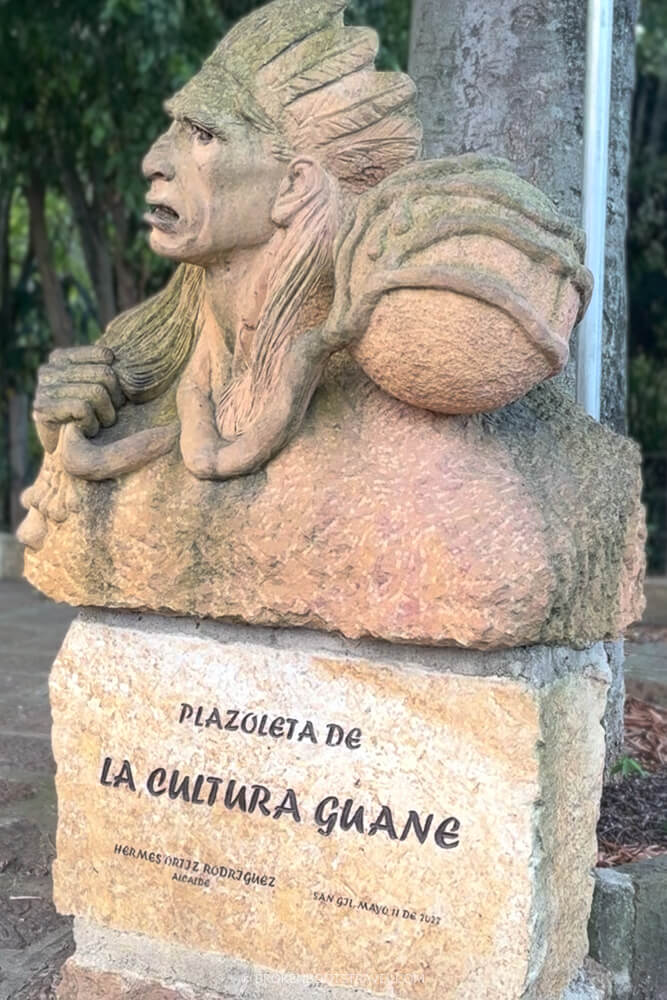
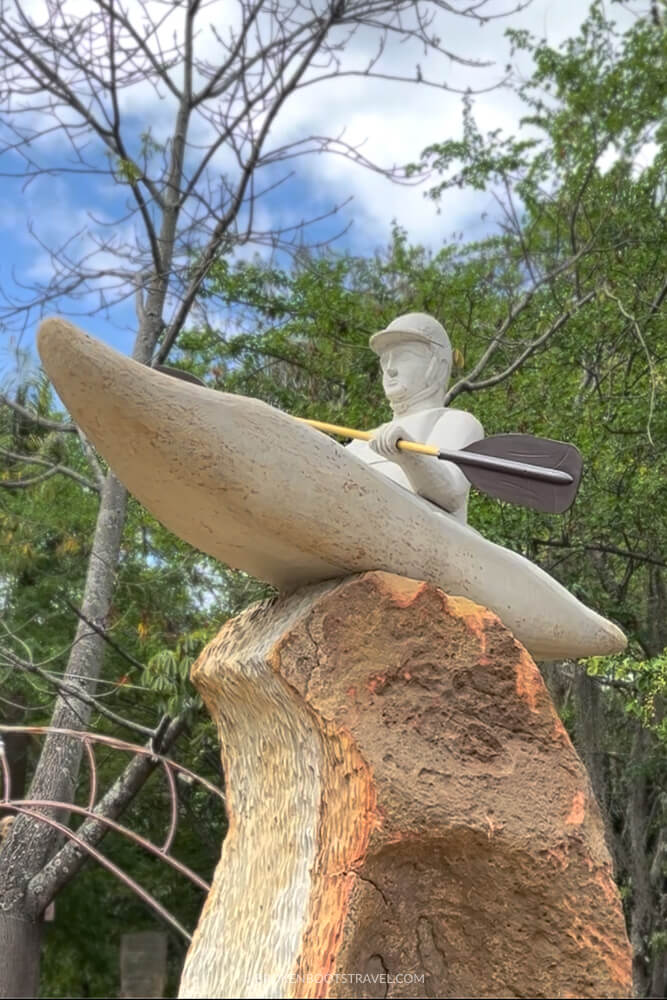
Day 12: Exploring San Gil
As Colombia’s unofficial adventure capital, there’s plenty of adrenaline-pumping experiences to be found in San Gil. However, it’s also a nature-lover’s paradise, so spend the day soaking up the best of both worlds.
Adventure Sports in San Gil
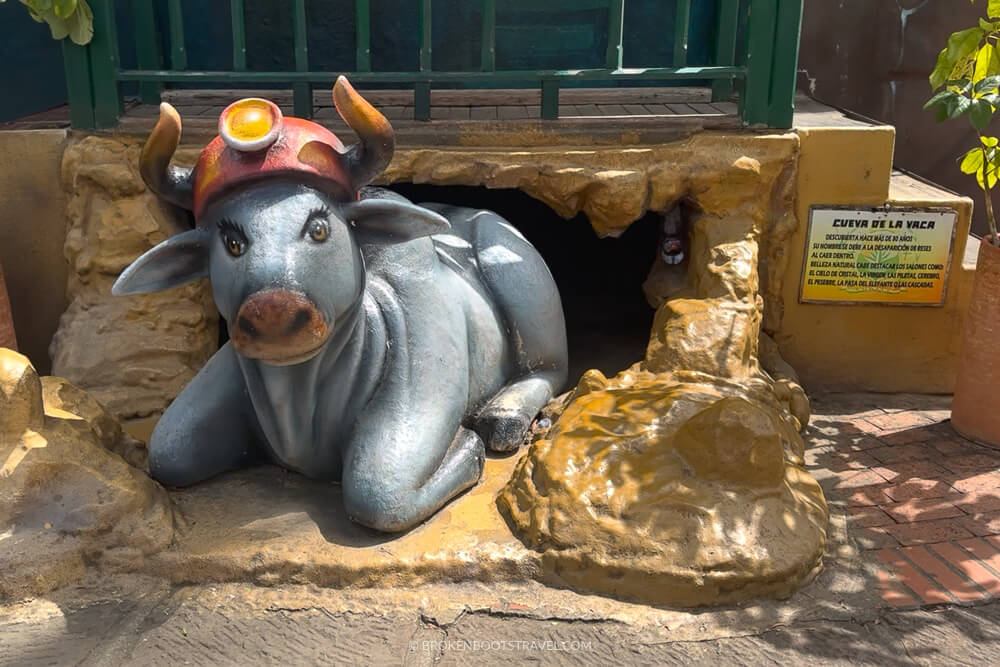
From white-water rafting to bungee jumping to caving, there are plenty of exciting activities offered in San Gil. Most hostels and hotels in town can help you organize activities – I personally organized tours through Green Door Hostel.
I personally recommend caving in Cueva de la Vaca and white water rafting on Río Suarez, though there are plenty of activities to choose from depending on your budget. Either way, prepare for an adrenaline adventure!
Adrenaline not your thing? Consider a day trip to the town of Barichara, one of the 17 pueblos patrimonios in the country and often considered the most beautiful town in Colombia!
El Gallineral Natural Park
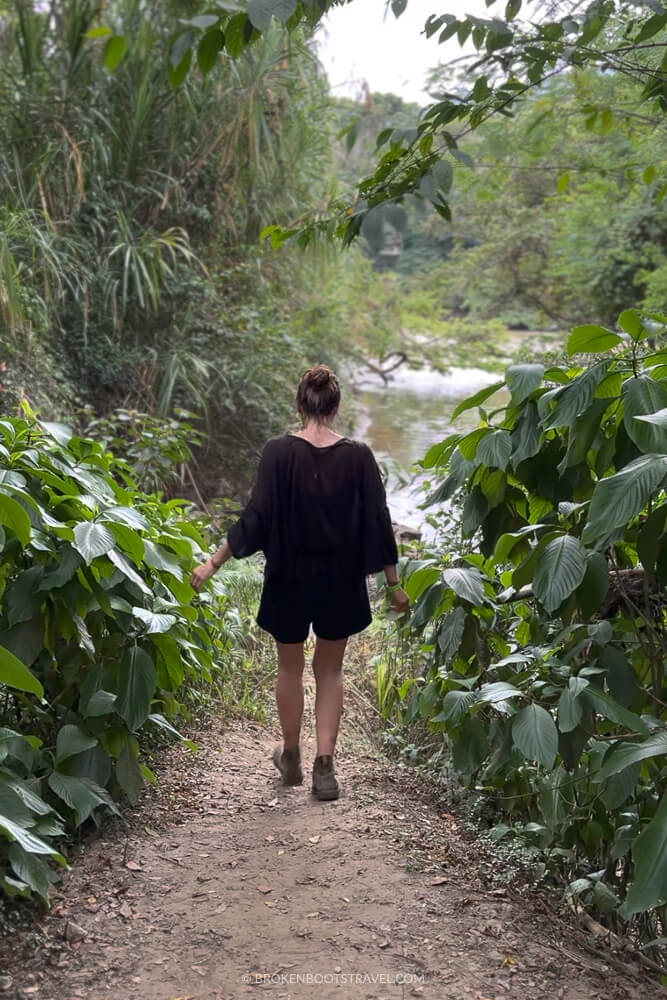
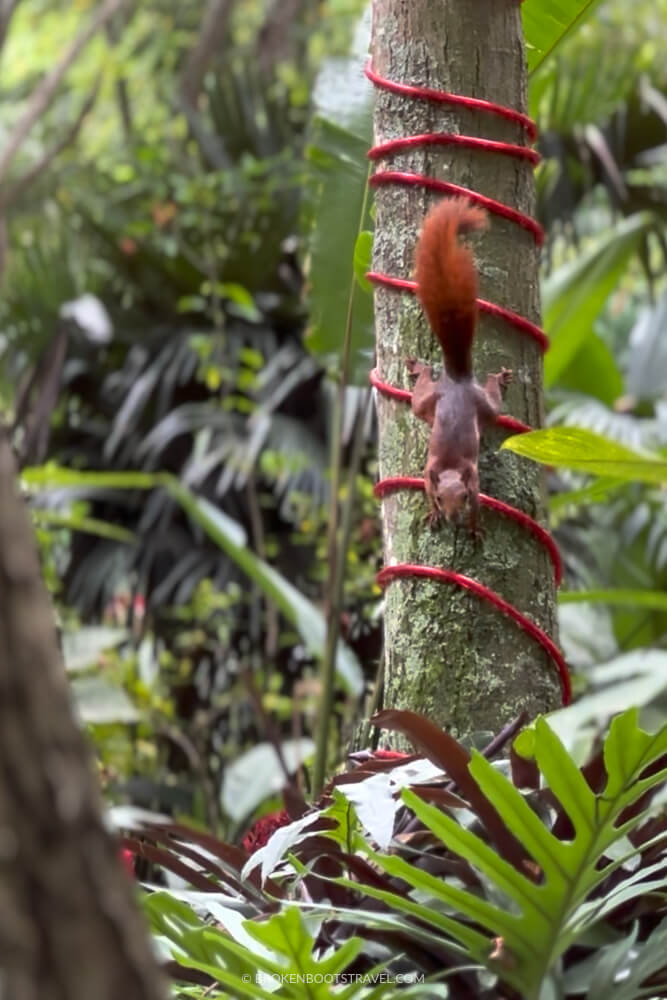
After a morning of activities, wind down at El Gallineral Natural Park in San Gil. This 10 acre park is where the Curití River meets the Fonce River, so you’ll likely see plenty of white water rafters float by as you enjoy a walk along one of the many trails in the park.
El Gallineral Natural Park is notable for its trees hung with Spanish moss, referred to as barbas de viejo, or “old man’s beard.” At sunset, the sun filters through the moss, creating a truly otherworldly sight. Keep an eye out for friendly iguanas as you explore, or pick up some hormigas culonas as a snack – big bottomed ants!
Days 13-16: SANTA MARTA
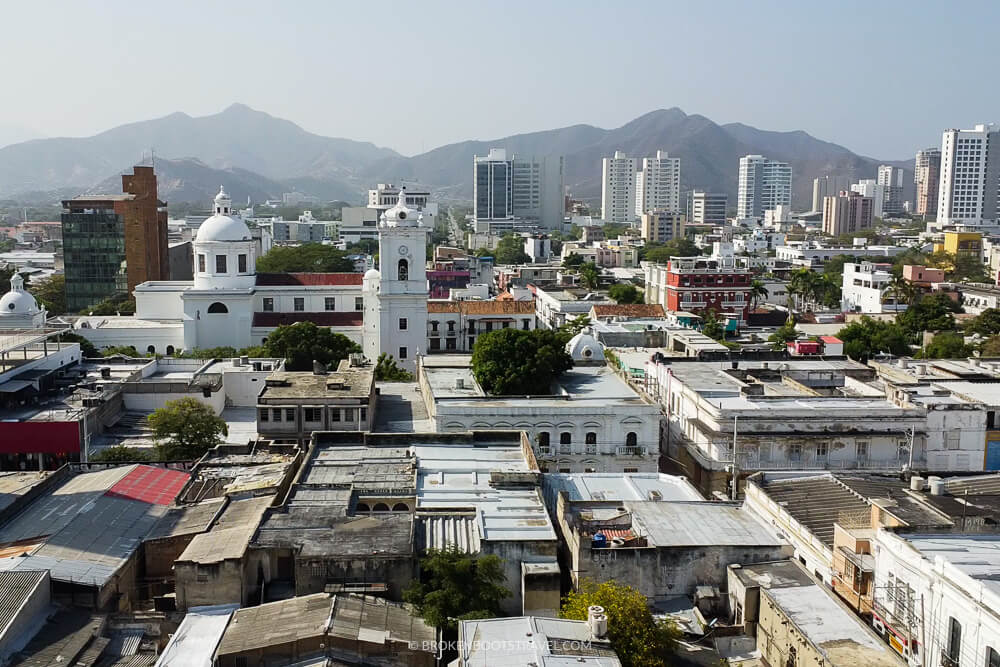
A gem on Colombia’s Caribbean coastline, Santa Marta is the gateway to some of Colombia’s most extraordinary natural features. Besides being nearby two national parks – Tayrona and Sierra Nevada – Santa Marta is also a colorful coastal city packed full of history. Plus, it’s home to some of Colombia’s best beaches, so pack your sunscreen and hit the sand!
Don’t want to DIY? Check out the best of Santa Marta on Get Your Guide:
Where to Stay in Santa Marta
Most travelers in Santa Marta opt to stay around Parque de los Novios in Santa Marta’s historic center. This area is characterized by a number of restaurants, bars, and hostels, not to mention the quintessential colorful Caribbean architecture that Santa Marta is known for. It’s also walking distance from the Malecón of Santa Marta where visitors can enjoy beaches and some of Santa Marta’s best restaurants. Here are some recommended accommodations in Santa Marta:
🌷 Masaya Santa Marta – Dreamy, centrally located hostel with two pools and a terrace
🍫 Cacao Hostel – Popular backpacker hostel great for meeting travelers
🤍 Calle 13 Hotel Boutique – Flower-filled hotel with on-site bar
💐 Casa Avelina Boutique – Boutique hostel with swimming pool and breakfast
Explore all accommodation in Santa Marta on Booking.com
How to Get from San Gil to Santa Marta
BY BUS | From San Gil, take a bus to Bucaramanga. Driving time is around 3 hours. From Bucaramanga, take a bus to Santa Marta, driving time of around 9 hours.
🚌 Click here to book your bus to Santa Marta
BY PLANE | From San Gil, take a bus to Bucaramanga, driving time around 3 hours. From Palonegro Airport, take a flight to Simón Bolivar Airport in Santa Marta. Flight time is around 40 minutes.
✈️ Click here to book your flight to Santa Marta
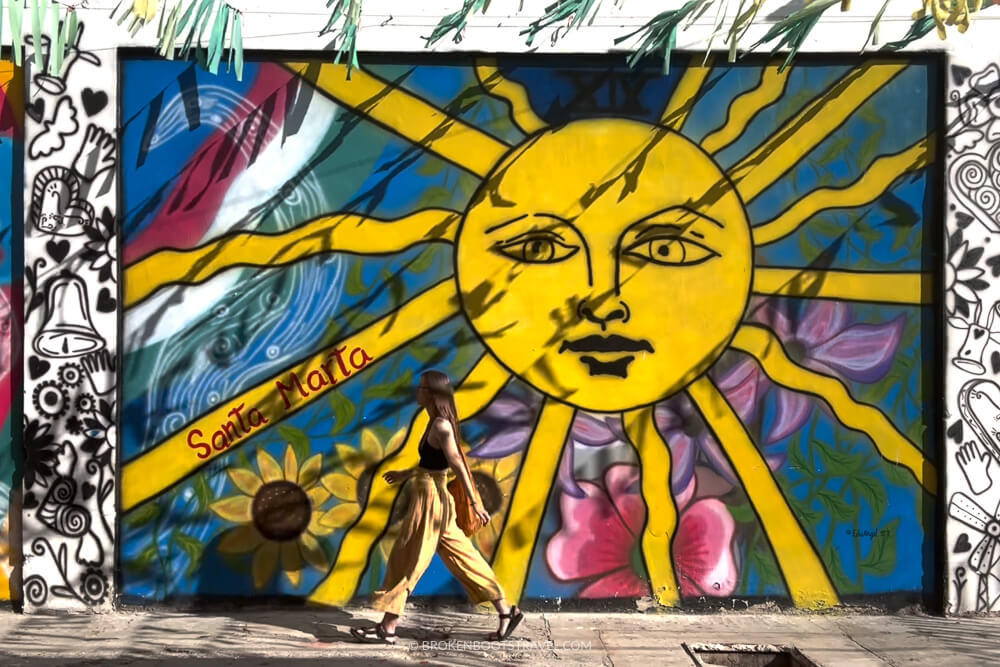
Day 13: Travel to Santa Marta
Travel between Bucaramanga and Santa Marta is a straightforward, if long, bus ride. Some travelers may opt to take a night bus to optimize time, but if you do choose to travel during the day, the trip will take you around 9 hours.
On the way, you’ll pass through the grasslands of the department of Cesar before you’ll soon start to see the towering Sierra Nevada mountain range approaching. These mountains are the ancestral homeland of 4 indigenous groups in the department of Magdalena and are home to many extraordinary histories.
I recommend leaving early enough in the morning to give yourself time to arrive in Santa Marta before the sun goes down, as the city can be a bit dangerous at night. If you did opt for the night bus and have some extra time in Santa Marta, consider exploring some of the city’s best sites before the sun goes down. Check out the Museo del Oro or the oldest cathedral in Colombia before ending the night with some food from one of the many restaurants near Parque de los Novios.
Have a little extra time in Santa Marta? Consider a trek to Colombia’s Lost City, one of the best ways to learn about the indigenous history of the area!
Day 14: Parque Tayrona Day 1
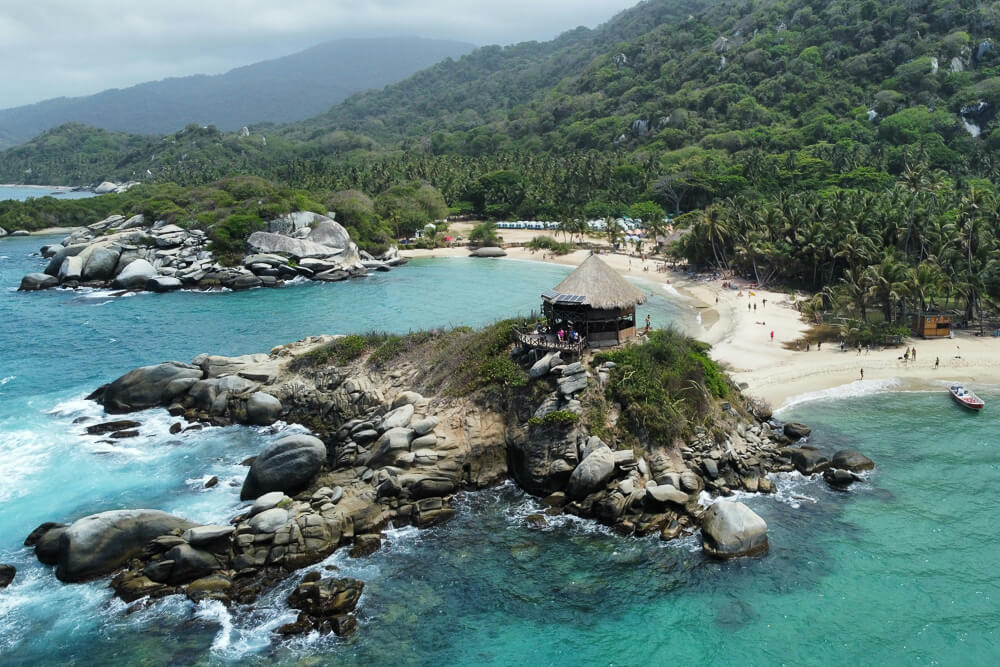
One of the most incredible natural areas in all of Colombia is Tayrona National Park, a 150 square meter area of protected land and sea. The park is home to some of the most incredible coastal landscapes in the country, and is actually a sacred site to the four indigenous groups that call the region home.
There are three entrances to the park, El Zaino (the most popular entrance), Calabazo, and PNN Tayrona. El Zaino is close to many of the most popular beaches, including Cabo San Juan (the most visited beach) and Playa Brava. The beaches in the park are connected by trails, so keep an eye out for howler monkeys and toucans as you explore.
Parque Tayrona is open from 8AM-5PM, though it is recommended to arrive early to ensure a spot in the park as they close it once capacity is reached. It’s also important to note that the park closes twice yearly for cleansing by the indigenous people of the area. You can find current park closings and prices on the Parque Tayrona website.
Quick tip: If you’re looking for less crowded beaches, consider walking further from the El Zaino entrance or visiting the Calabazo or PNN Tayrona entrances.
How to Get to Parque Tayrona from Santa Marta
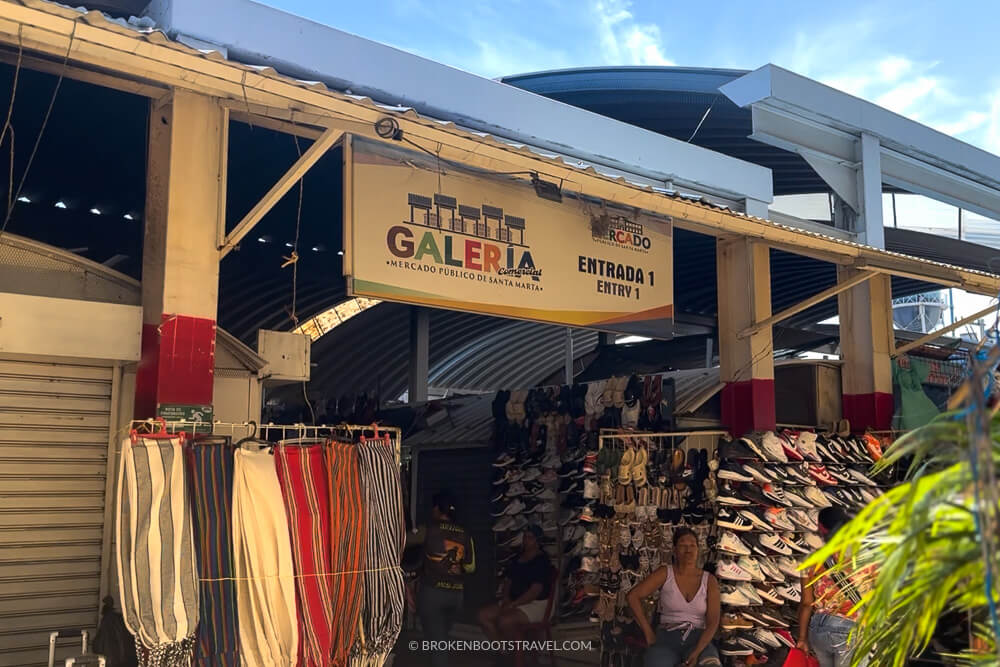
Parque Tayrona is located about 40 minutes from the city of Santa Marta. It is recommended to leave early on your planned visit day to ensure you get a spot in the park. Here are the two most popular ways to travel between Santa Marta and Parque Tayrona.
BY BUS | From Santa Marta, take a taxi to the public bus station (outside of town) or to the Public Market (outside the centro) From either station, you can find buses traveling to Parque Tayrona every 30 minutes, which will drop you at the El Zaino entrance to the park. Travel time is about 40 minutes and costs around 15,000 COP ($4 USD)
BY BOAT | To travel to Tayrona by boat, first take a public bus or taxi to Taganga. Buses can be found on Carrera 5 or right outside the Santa Marta Malecon. The bus costs around 6,000 COP ($1.50 USD) From Taganga, boats will take you directly to Cabo San Juan for around 80,000 COP ($20 USD) Make sure to arrive early in order to charter a boat before they leave.
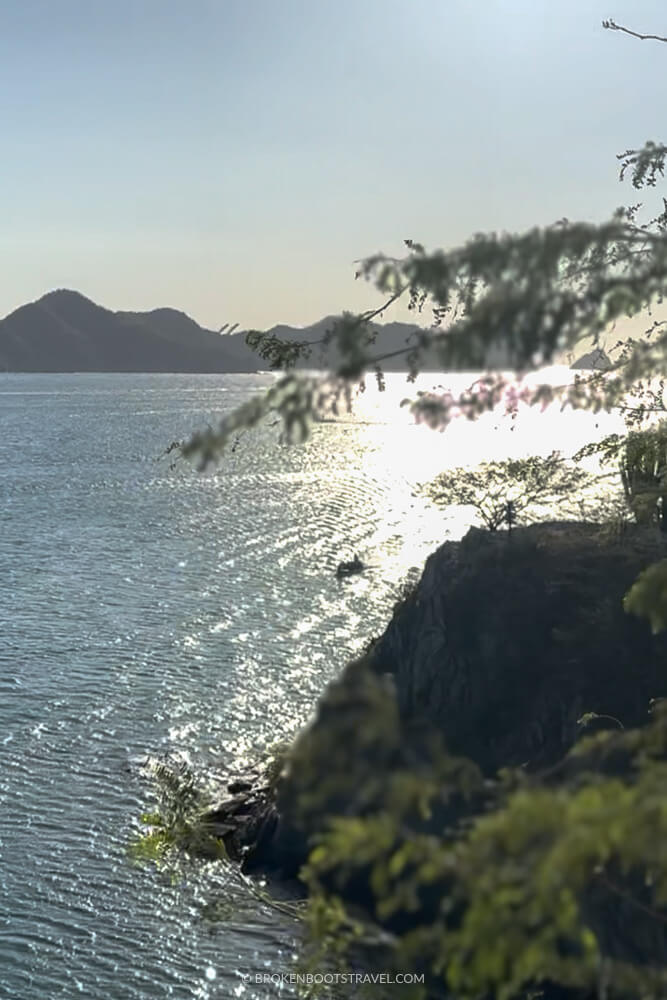
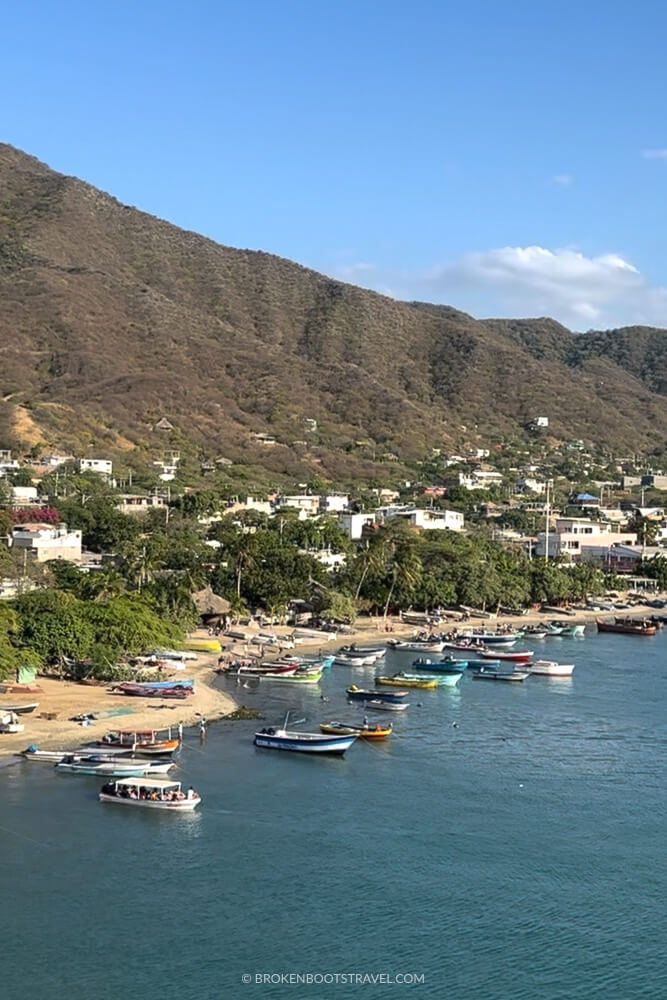
Where to Stay in Parque Tayrona
There are no traditional hotels within Tayrona National Park, so accommodations generally consist of eco lodges and camping options. However, eco-lodge doesn’t mean bare bones, with many accommodations featuring on-site pools, shared dining spaces, and even luxurious bathtubs (think jungle views!) However, if you’re up for it, there’s nothing like camping under the stars in Tayrona. Here are a couple recommended accommodations in Parque Tayrona:
Day 15: Parque Tayrona Day 2
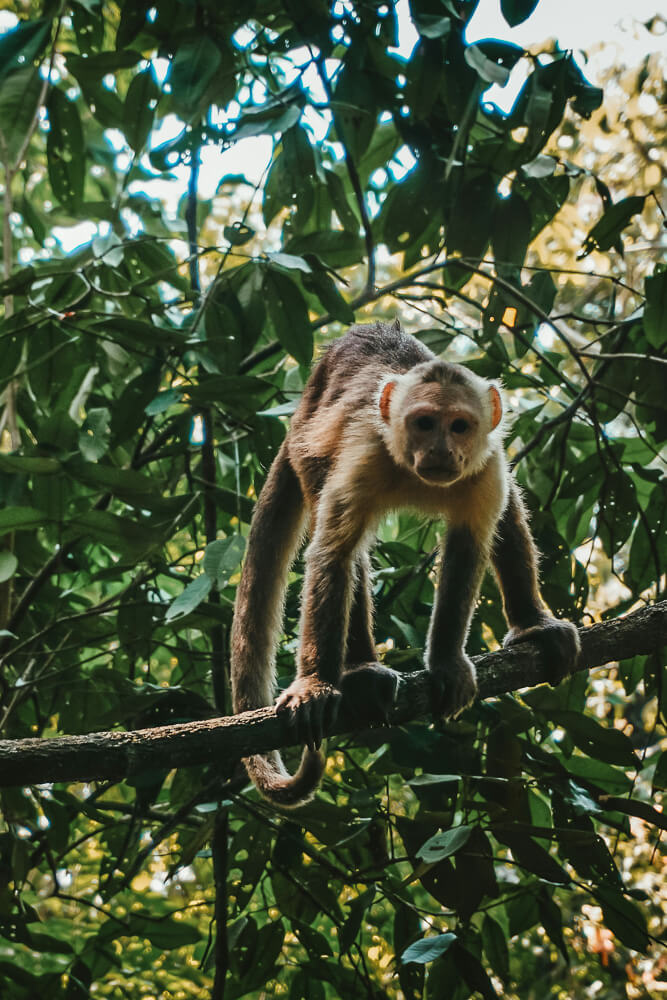
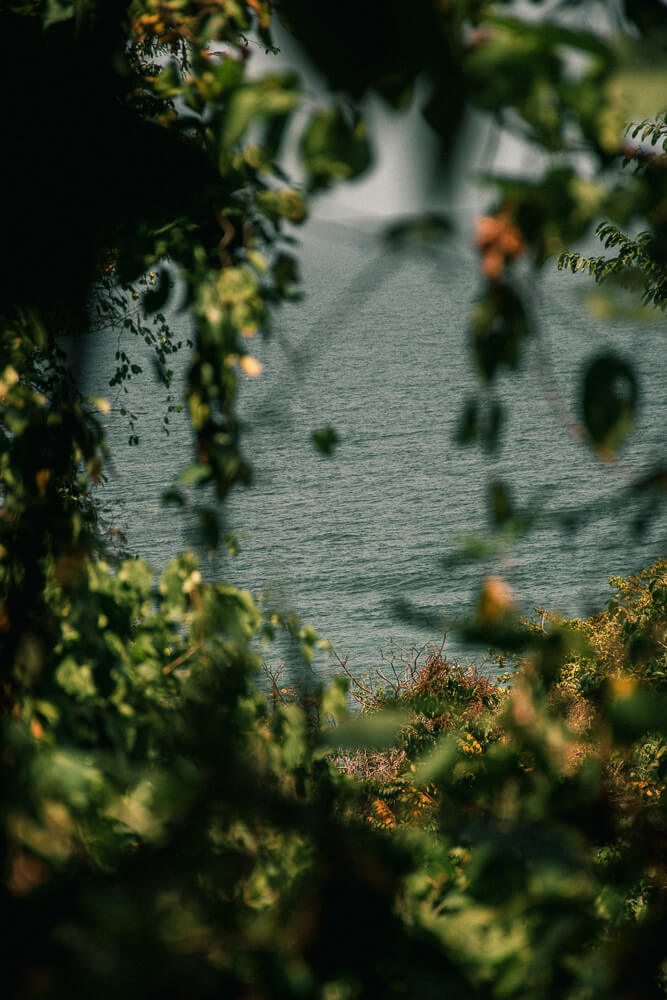
Wake up to the sound of crashing waves and get ready for another peaceful morning spent at Parque Tayrona. Take some time in the morning to snorkel at Playa Cristal or spot colorful toucans along the trails, before making your way back to the closest entrance to catch the bus back to Santa Marta.
Make sure to leave the park before 5PM, as that is when the last bus operates back to Santa Marta. If you do decide to give yourself some time in Santa Marta in the afternoon, consider exploring some of the Old Town or stopping for a bite to eat at Alfaix – the best Cayeye in Santa Marta!
How to Get from Parque Tayrona to Santa Marta
From any Parque Tayrona entrance, buses run regularly back to Santa Marta, around every half hour. The bus costs around 15,000 COP ($4 USD) and takes around 40 minutes, dropping passengers off at Santa Marta’s Public Market, located just outside the Old City center.
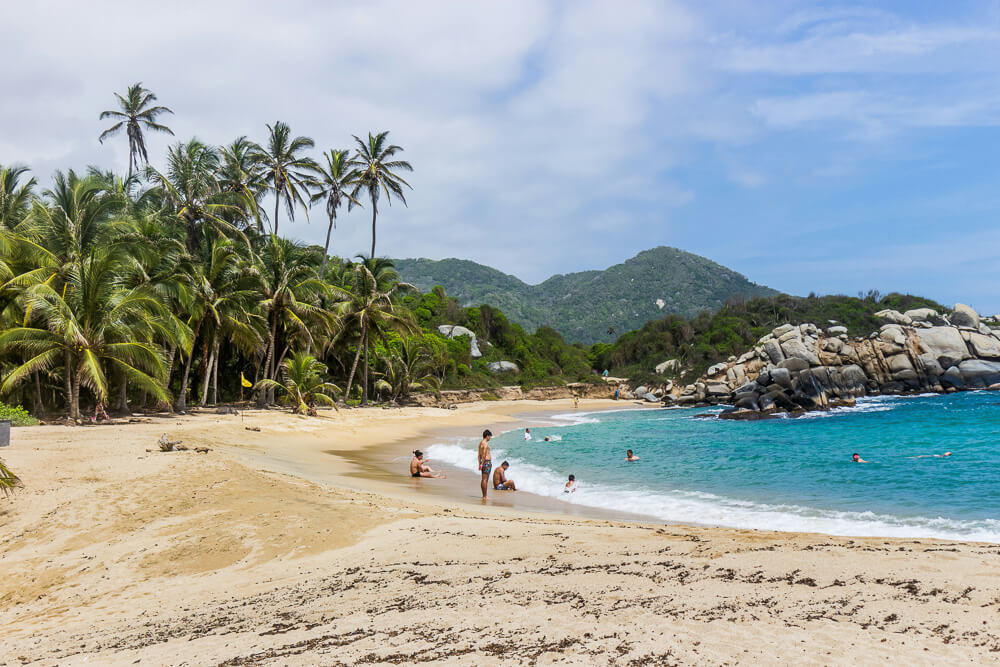
Day 16: Day Trip to Minca
In the morning, hop on a collectivo (shared minivan) from Santa Marta’s Public Market to the town of Minca. The ride is about 45 minutes, but once you arrive in the tranquil, lush town of Minca, you’ll think you’ve entered a different planet.
Sample Coffee and Cocoa
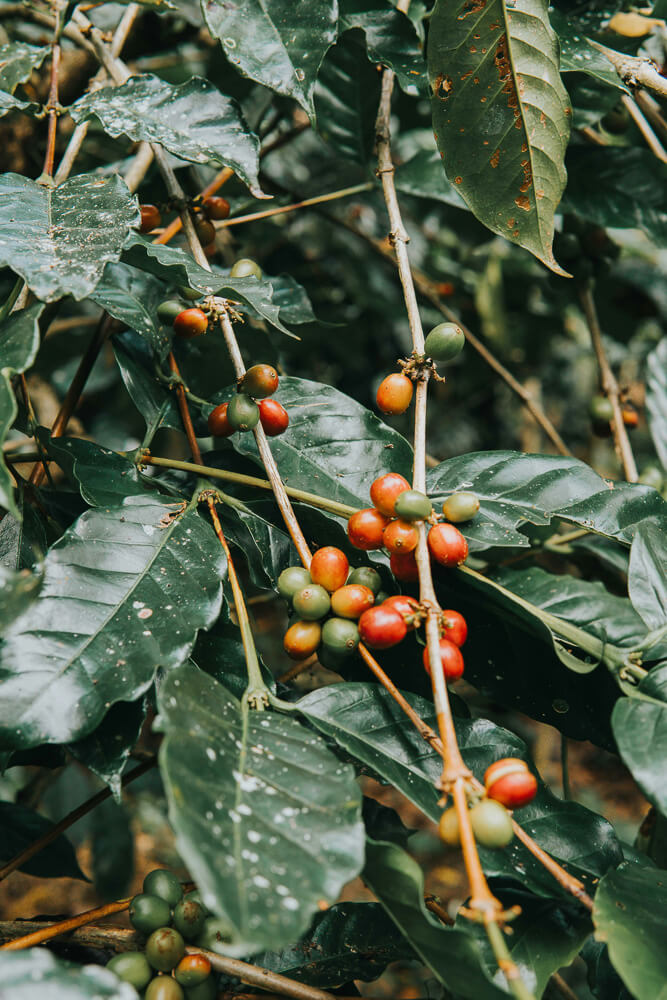
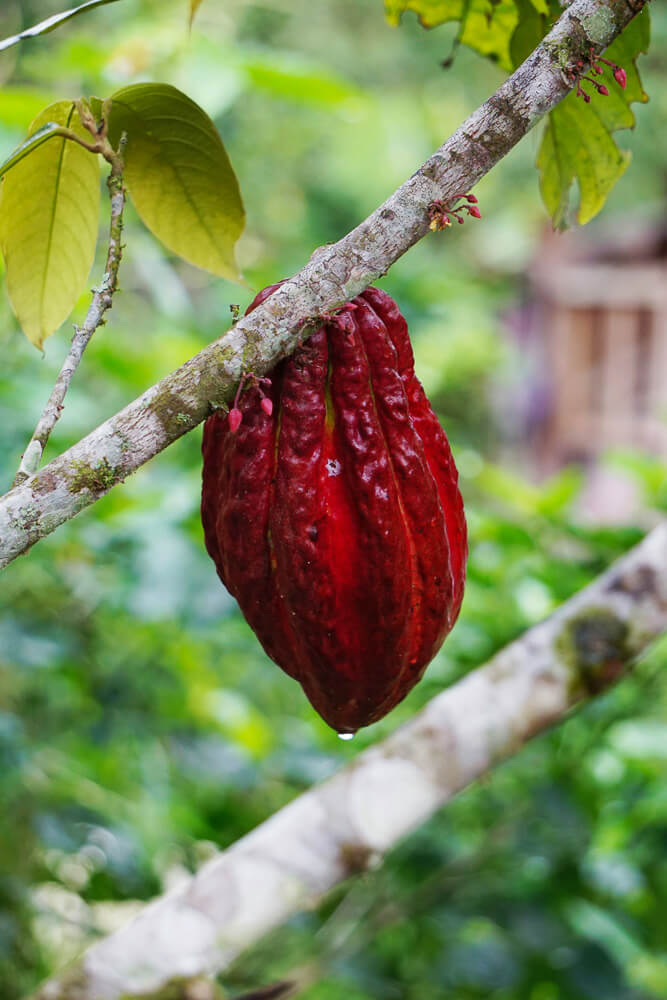
Minca’s lush, tropical climate makes it the perfect spot for growing two of Colombia’s most notable products – cocoa and coffee! Join a tour to one of the most popular fincas in the area, or rent a moto in the town center and explore on your own.
Finca La Victoria is one of the most popular coffee fincas in the region and one of the oldest in the country, offering daily tours for visitors. If you didn’t get enough coffee-tasting in the eje cafetero, or you just want to sample some coastal coffee, this is the best place to add to your Colombia itinerary.
Visit a Waterfall
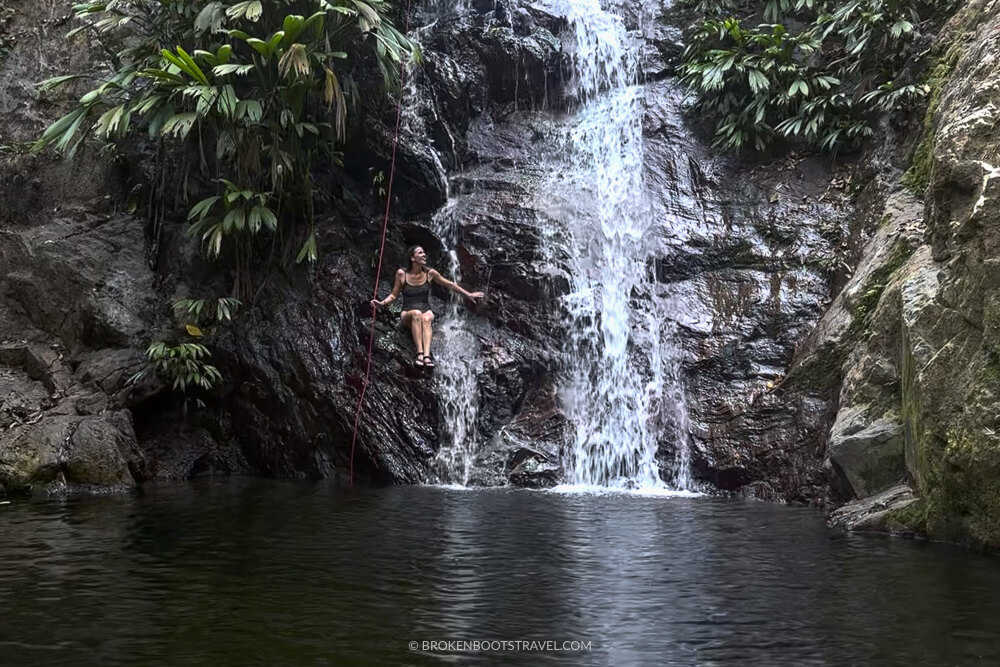
One of the best things to do in Minca is visit one of the many natural swimming holes near town. There are plenty to choose from, so you can stick to one or go waterfall-hopping around the area.
If you’re already at Finca La Victoria, the popular Pozo Azul (Blue Lagoon) is right nearby. It’s made up of two distinct pools, though you can continue upstream if you wish to explore more.
My personal favorite is Cascada Perdida, which has an attached coffee shop where you can enjoy some local brews afterwards. Cascada Oido del Mundo is also a great place to cool down and walk behind the waterfall. If you’re interested in discovering waterfalls in Minca, check out this guided trip that also includes birdwatching!
Days 17-21: CARTAGENA
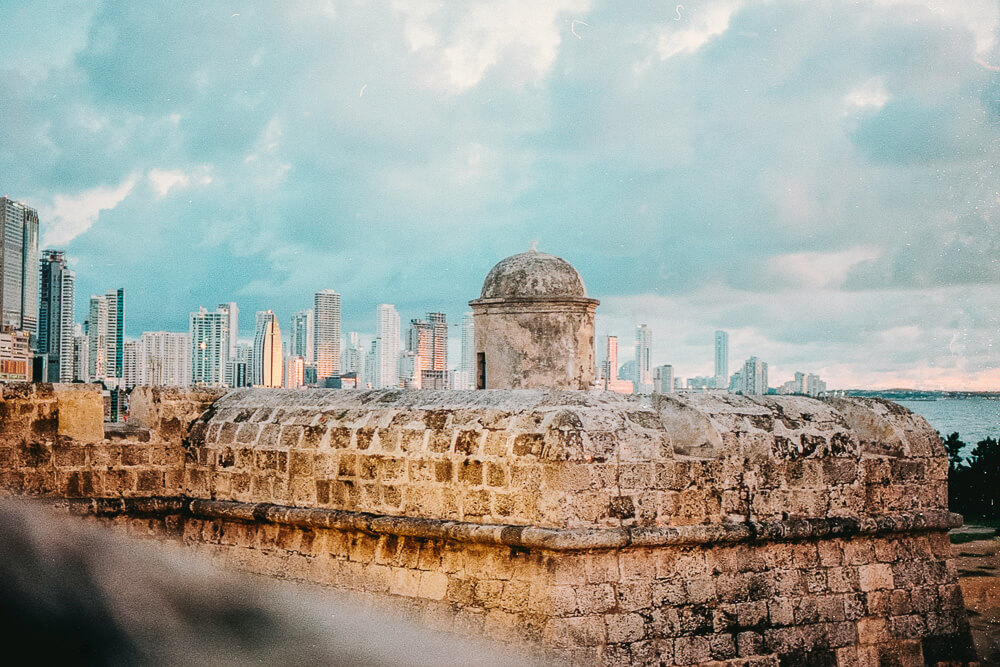
Cartagena hasn’t earned its title as the most-visited Colombian city for no reason! This city is the quintessential image of the Colombian Caribbean – from colorful colonial architecture to Spanish-style forts straight out of Pirates of the Caribbean. Whether it’s city exploring or beach lounging that you’re craving, there’s plenty to see in the city, making it the perfect place to end a trip to Colombia.
Don’t want to DIY? Check out the best of Cartagena on Get Your Guide:
Where to Stay in Cartagena
The two most popular places to stay in Cartagena are the bohemian Getsemani neighborhood and the centro historico, or “Walled City.” Both neighborhoods are home to everything from budget hostels to luxury hotels and are a short walk from many of Cartagena’s major tourist attractions. Here are some recommended places to stay in Cartagena:
👑 Dorado Plaza – Traditional backpacker hostel with terrace and game rooms
🏠 Casa Lorenzo – Colorful boutique hostel located in Old Town Cartagena
🌿 Los Patios Hostel – Hostel located in a traditional home with a rooftop pool
🙂 Life is Good Hostel – Social hostel located in a home in Getsemaní neighborhood
Explore all accommodation options in Cartagena on Booking.com
How to Get to Cartagena from Santa Marta
BY BUS | From Santa Marta’s bus terminal take a bus to Cartagena. Driving time is around 5 hours.
🚌 Click here to book your bus to Cartagena
BY PLANE | While there are flights from Santa Marta to Cartagena, most have a stopover in Bogota, meaning they take significantly longer than bus travel. I recommend taking the bus between both cities, or even renting a car for more comfort.
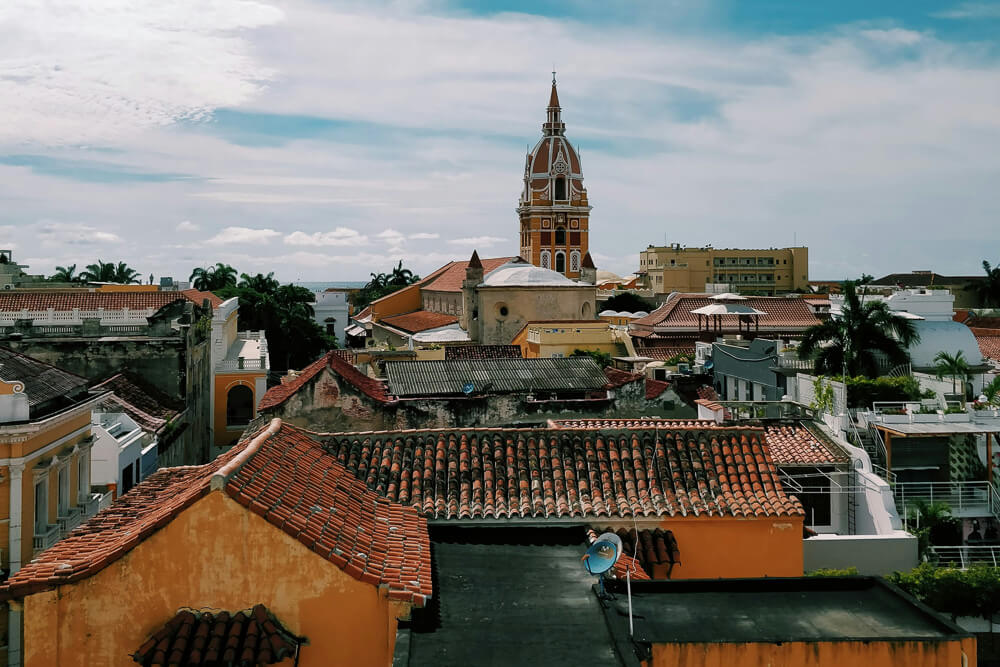
Day 17: Travel to Cartagena
Cartagena is located about 5 hours from Santa Marta, passing along the Colombian Atlantic. On the way you’ll have the chance to see some of Colombia’s coastal landscapes, from the marshlands to the powdery white beaches that define this region.
Once you arrive in the city, wind down for the day by finding the perfect sunset spot. If you’ve arrived with time to spare, check out the sunset from El Castillo de San Felipe, a towering colonial fortress built in 1536, featuring some of the most incredible skyline views in the city. The fortress is open daily from 8AM-6PM and tickets cost 25,000. If you want to learn more about this incredible structure, consider joining a guided tour like this one.
If you’re short on time, another great sunset spot is Cafe del Mar, a trendy restaurant located on Cartagena’s old city walls themselves. Buy a cocktail and some tapas and watch the sunset over the skyscrapers of Cartagena.
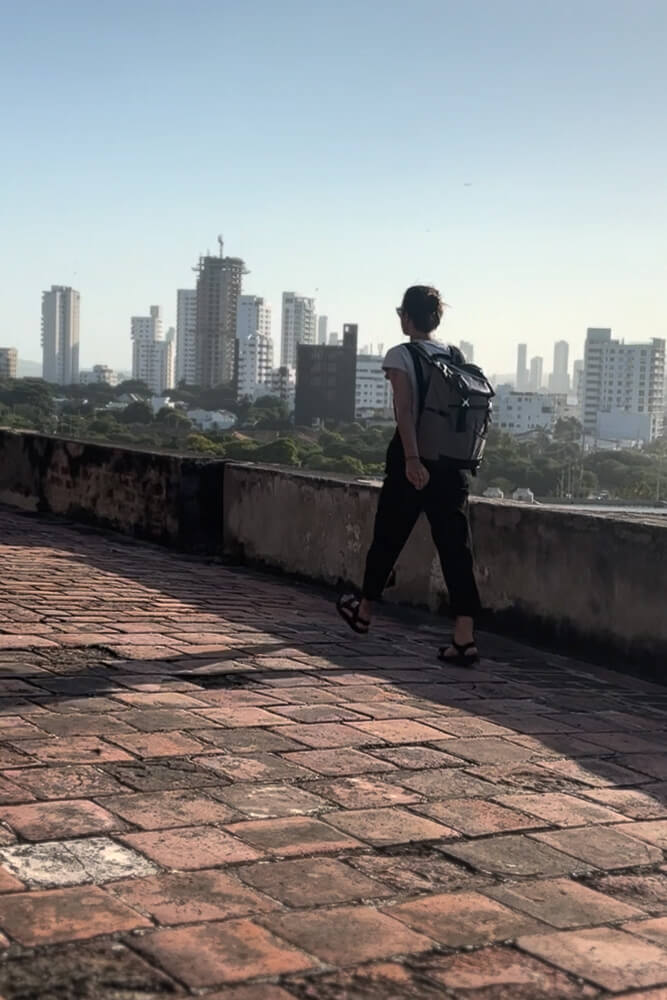
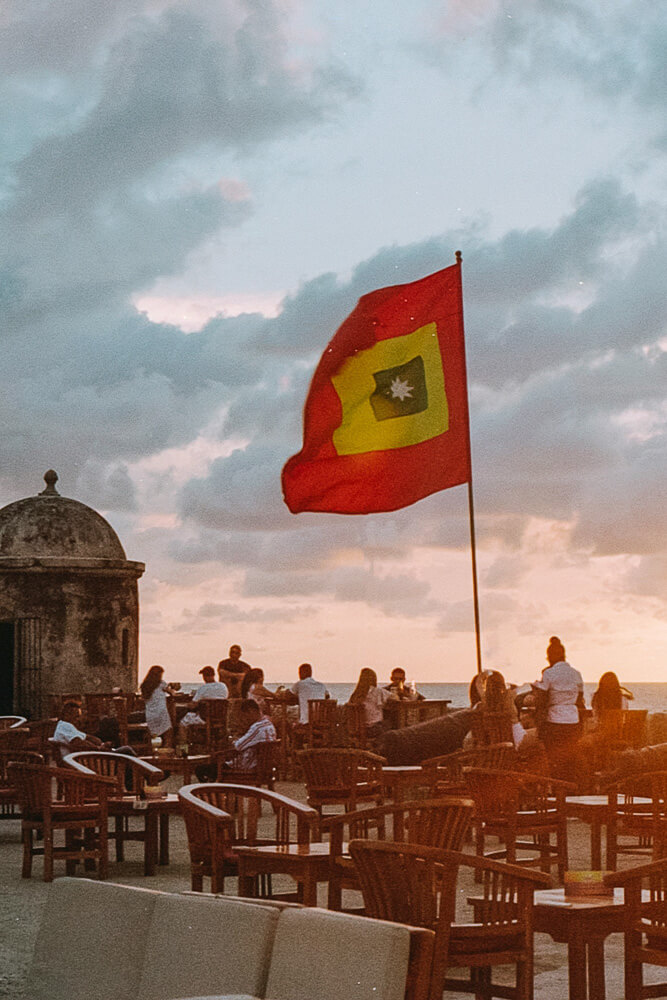
Day 18: Exploring Cartagena
Start your first day in Cartagena with a cold drink – it’s going to be a hot one! Street vendors on nearly every corner offer fresh juice, from mandarin to pineapple to panela, so it’s hard to go wrong.
Visit Old Town Cartagena
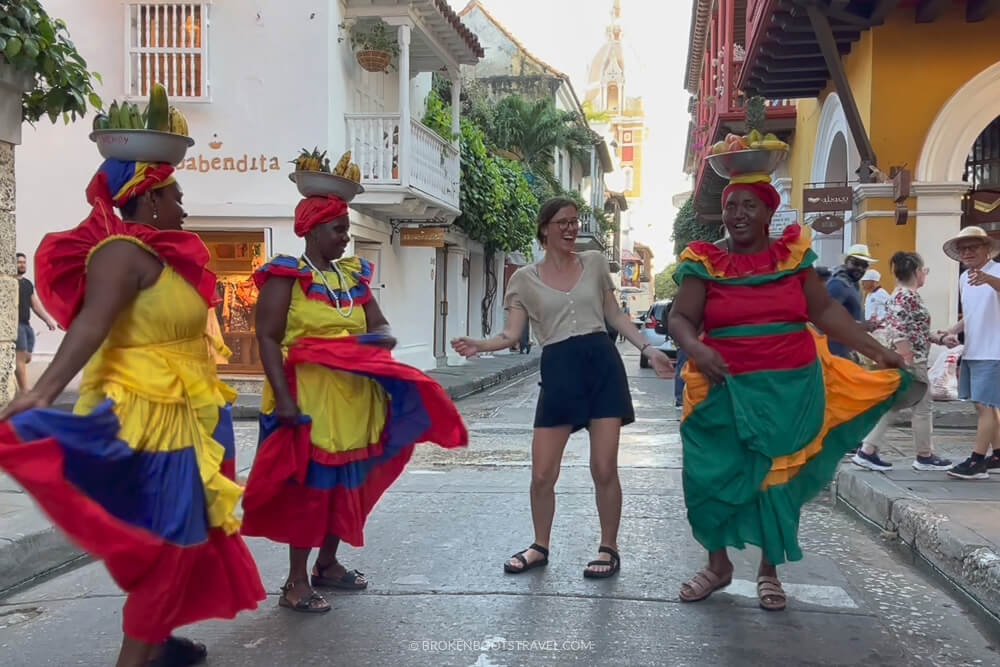
Cartagena is characterized by its colorful, colonial buildings, the perfect place to get lost for a morning with a camera in hand. The historic center is known as the “Walled City,” thanks to the towering stone walls that surround it, built in the 1600s. In fact, these walls are the most well-preserved fortification in South America and a UNESCO World Heritage Site.
There’s plenty to see within the old city walls. Start out at the Clock Tower and grab a quick photo with the palenqueras along the colorful architecture. Plenty of vendors gather beside the clock tower selling local handicrafts, so it’s also a great place to do some souvenir shopping.
Next, wander over to the Portal de los Dulces alongside Cartagena’s Plaza de los Coches. Here you can sample a variety of Cartagena’s famous sweets. The cocadas are the most famous, made with panela and coconut, but my personal favorite are the tamarind balls! Plaza de los Coches is also one of the most historically significant areas of the city, as it was once the former slave market of Cartagena.
To get to know more history of the city, consider joining a guided walking tour to hear more stories as you visit.
Explore Barrio Getsemaní
Cartagena’s Barrio Getsemaní is a colorful, eclectic neighborhood known for its backpacker hangouts and intricate street art. It’s a great place to spend an afternoon wandering along the colorful streets, grab a bandeja del pescado at Coroncoro, and end the day with a cold beer and some rumba in La Plaza de la Trinidad.
This neighborhood of Cartagena is also home to a unique history. Similar to Medellin’s Comuna 13, Barrio Getsemani was once overrun by crime and violence. Local artists took to the walls of the neighborhood as a form of social resistance and transformed the area into how we know it today – a living work of art, representative of the many communities who have called it home. Consider joining this walking tour to learn more about the history of the neighborhood.
Nearby Barrio Getsemani is El Parque Centenario, a relaxing city park home to a number of friendly creatures. Keep an eye out for monkeys, squirrels, and even sloths!
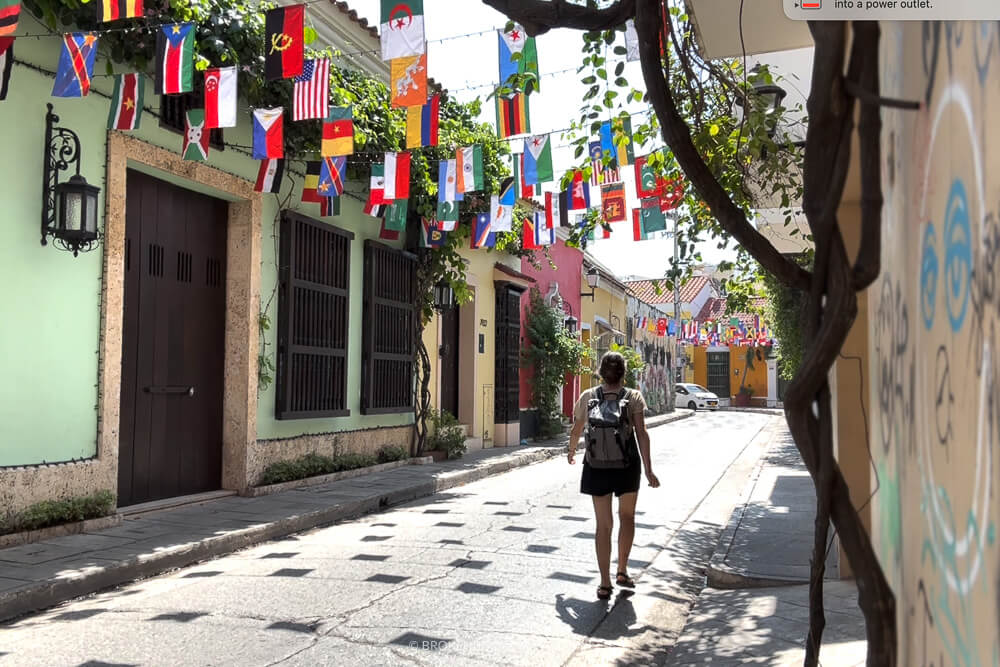
Day 19: Visit Cartagena’s Islands
On the second day in Cartagena, we’re off to visit some of the quintessential beaches that make this city a holiday destination for vacationers around the world. Grab your sunscreen and your swimsuit and prepare for the ultimate beach day.
Isla Baru vs. Rosario Islands
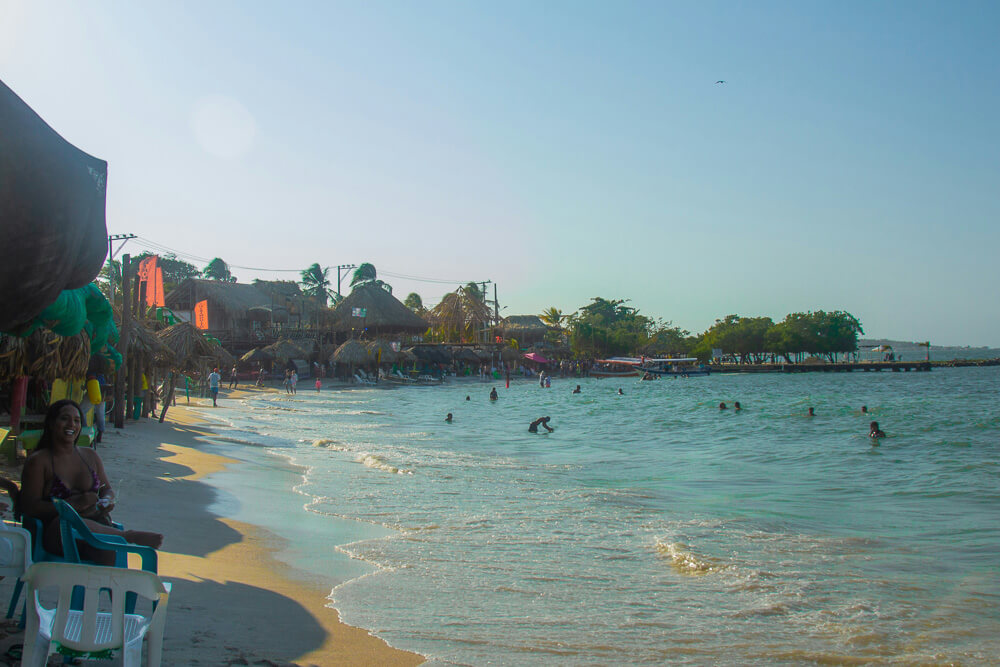
The two most popular islands to visit outside of Cartagena are Isla Baru and the Rosario Islands. Both offer beautiful beaches and crystal clear water, but if you only have one beach day in Cartagena, it’s important to consider which location might be better suited for your itinerary.
Cartagena’s Isla Baru is the quintessential beach hangout outside the city. Its main beach of Playa Blanca is spotted with beach bars and vendors line the sand selling cold beers and coco locos. It’s a great place to meet other travelers and enjoy some rumba, or lounge with a cocktail in hand.
Isla Baru is located about 45 minutes from Old Town Cartagena. You can hop on a shuttle to Playa Blanca, the main beach on the island, outside of Hostal Mamallena, or join a guided tour to see more spots along the island.
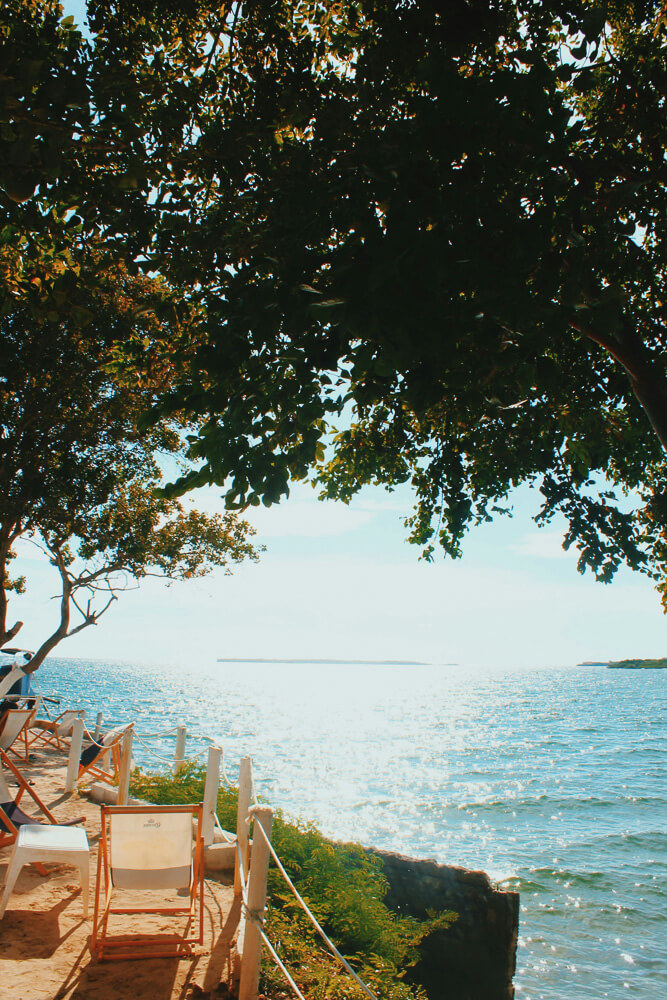
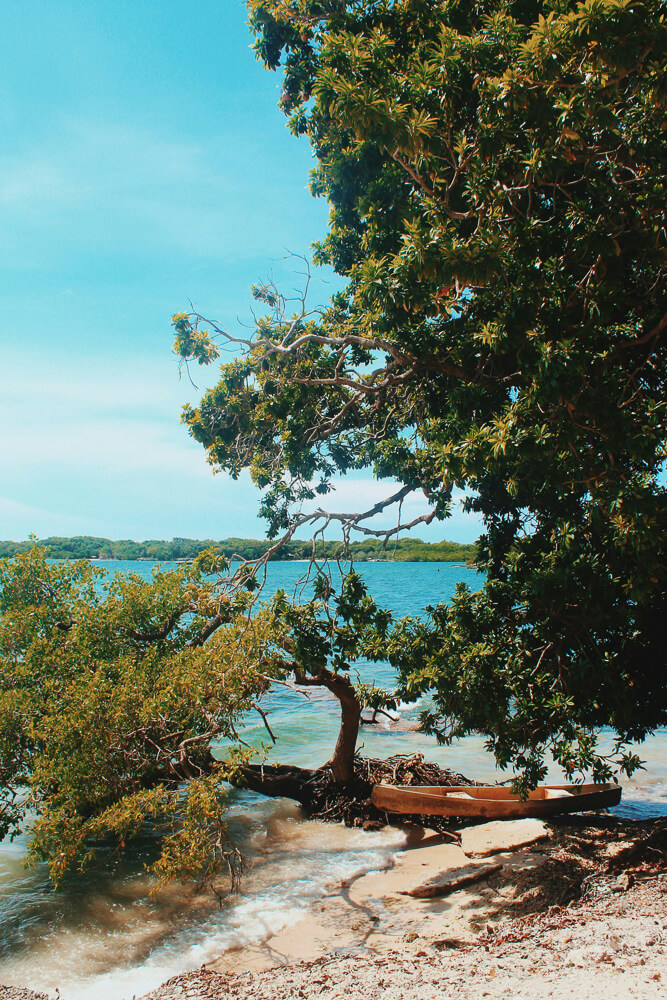
The Rosario Islands offer a more tranquil, secluded atmosphere. Located 1 hour by boat from Old Town Cartagena, these 28 barrier islands are world renowned for some of the best snorkeling in the world. They’re a true Caribbean paradise, home to crystal clear water that rivals that of the seven color sea in Providencia!
You can visit the Rosario Islands independently from Cartagena by purchasing a ticket from the Muelle Turistico Bodeguita, but if you only have a day, I highly recommend joining a tour to make the best use of time. This tour from Backpackers Cartagena offers snorkeling, lunch, and a visit to multiple islands.
Love the island life? Check out this Ultimate Guide to San Andres Island, Colombia’s Caribbean Paradise!
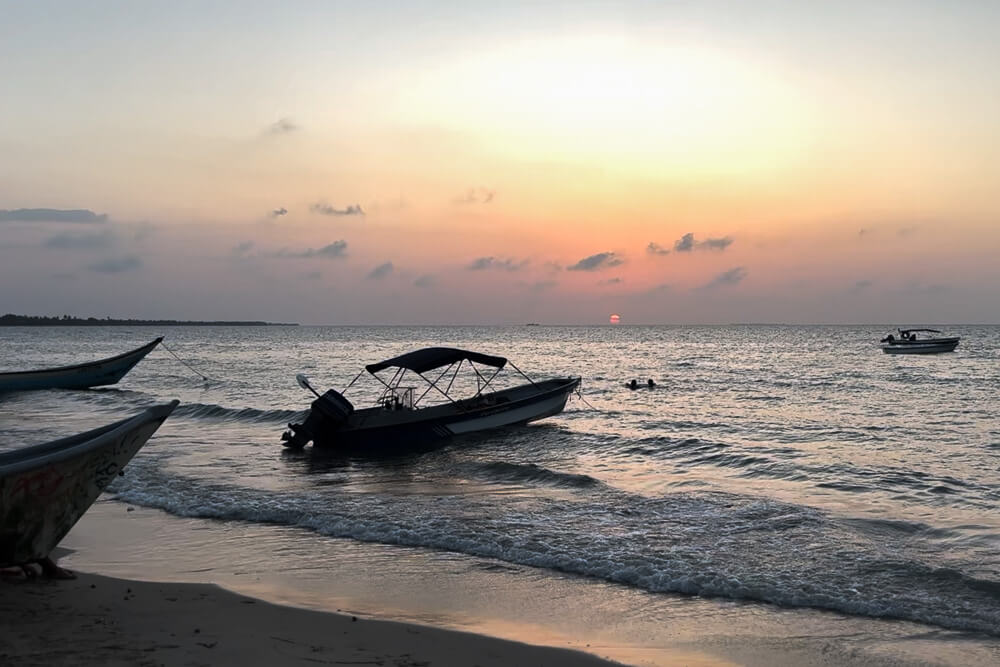
Swim with Bioluminescent Plankton
Wherever you decide to spend your beach day, make sure to stay until dark. The coast of Cartagena is home to bioluminescent plankton and many beaches offer snorkeling tours. You’ll feel like you’re swimming among the stars as you watch the plankton glow blue beneath the water.
If you traveled independently, many boats operate tours directly from the major beaches, but you can also join a guided tour that includes snorkeling with bioluminescent plankton like this one from Freedom Beach Club.
Day 20: San Basilio de Palenque
Today we’re traveling about an hour outside of Cartagena to the town of San Basilio de Palenque. This town is often called the “Africa in Colombia,” founded by former slaves and maintaining many African traditions, from music to medicine to spirituality. It’s truly one of the most extraordinary places in the country and one of the best day trips from Cartagena.
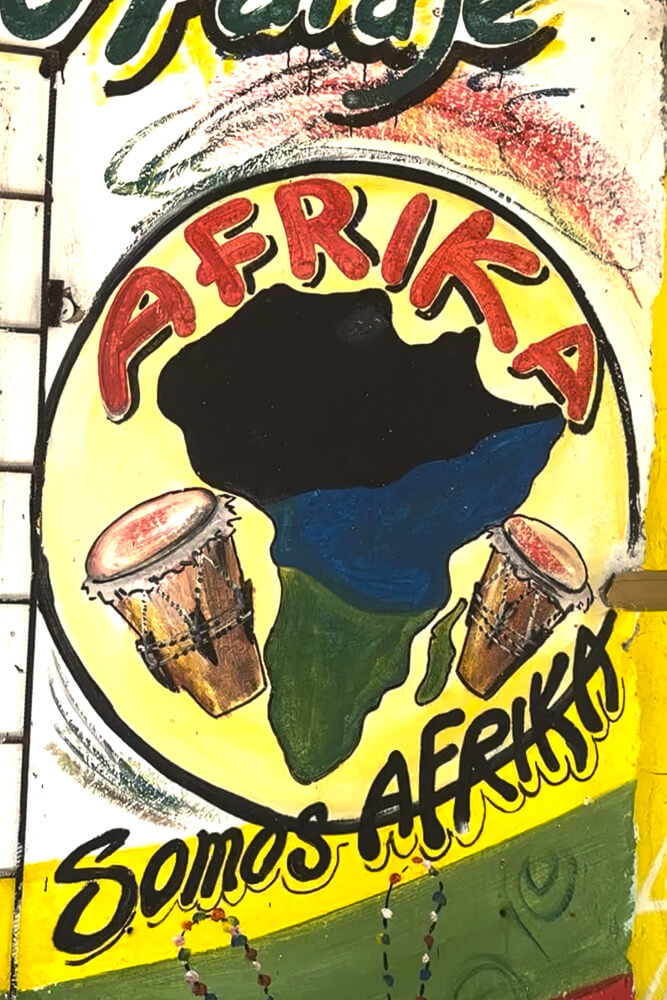
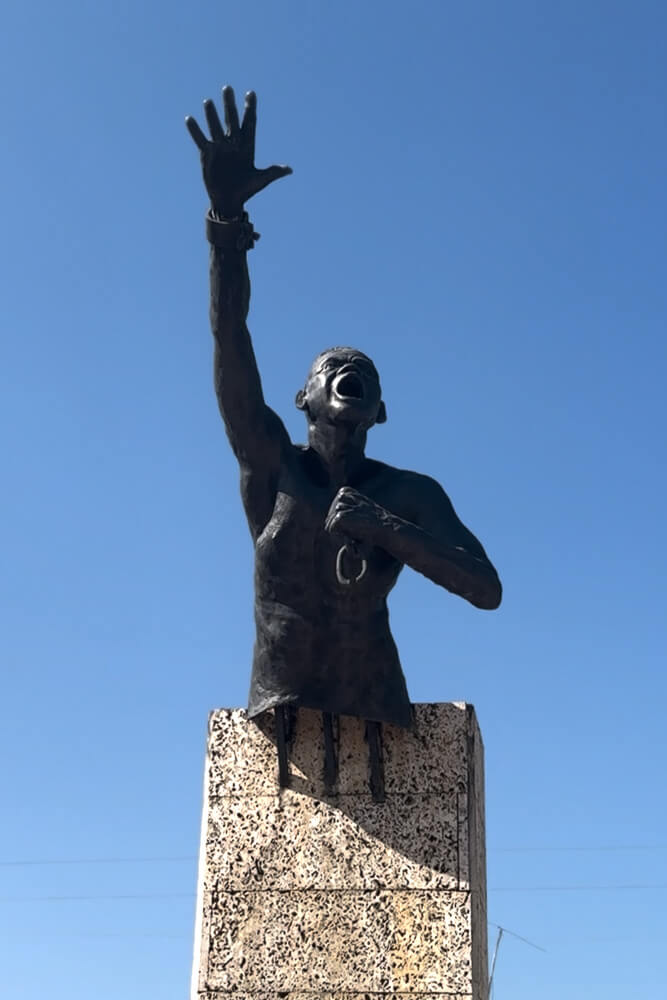
Due to its relative isolation in the swampland outside Cartagena, the town of San Basilio de Palenque has maintained many traditions of the African slaves that founded it. In fact, they even have their own unique language, called Palenque, which combines elements of multiple African and European languages. Inhabitants of the town are dedicated to the preservation of the distinct culture and to sharing it with visitors from around the world.
San Basilio de Palenque is located about an hour outside of Cartagena. While it is possible to visit independently, I highly, highly recommend visiting with a local guide to truly understand the history and significance of this town. My friend Nuedis runs a tour company called Benkos Tours which offers guided tours of the town (Spanish only). If you prefer English speaking/need transportation, I recommend this tour from Beyond Colombia.
Day 21: Departure from Colombia
After three weeks in Colombia, it’s time to say goodbye to this extraordinary country. Due to its popularity as a holiday spot, Cartagena is a great place to catch either a domestic or international flight to your next destination. You can search for flights from the Rafael Nunez airport here.
The Best Time to Visit Colombia
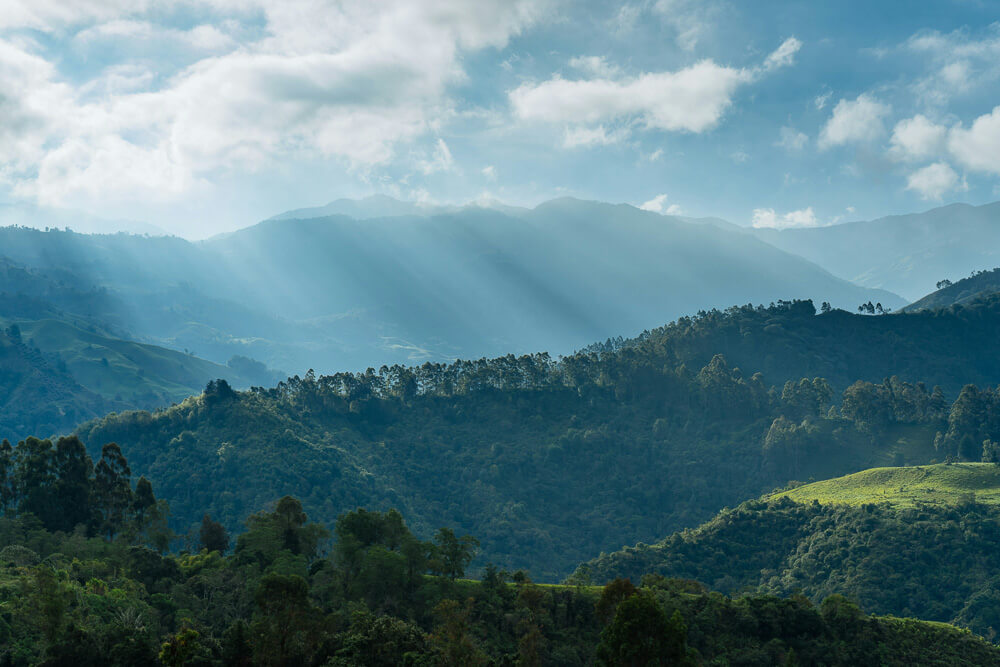
Due to its tropical location, Colombia has fairly moderate temperatures year-round, though the months of December-March are usually the driest. Temperatures will likely be the coolest in Bogota, ranging between 10-18 degrees celsius (50-66 degrees fahrenheit) and hottest on the coast, ranging between 26-32 degrees celsius (80-90 degrees fahrenheit)
However, it’s important to consider the locations you want to visit when planning your Colombia itinerary. Due to holidays, December is a busy month at many popular tourist destinations. Holy Week, usually late March-early April is also a popular travel time for Colombians.
Pay attention to closing dates for popular destinations as well. Parque Tayrona closes twice yearly for cleansing, so you can find the most up-to-date information here.
Continue Your Trip
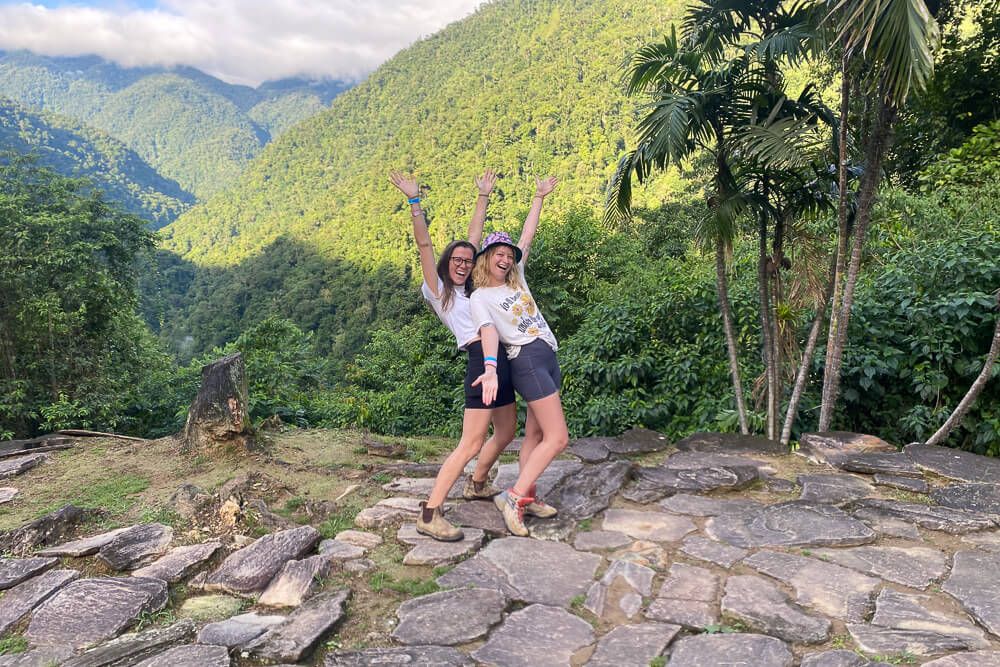
Have more than three weeks to spend on your Colombia itinerary? There’s plenty more to see in this country, from the salsa culture of Cali to the Caribbean islands of San Andres.
Consider sticking around for one of Colombia’s incredible festivals, like Carnival in Barranquilla or the Vallenato Festival in Valledupar. Or if adrenaline and adventure is more your thing, consider a trip up to the deserts of La Guajira or the adventure capital of Santander.
Need advice planning your Colombia itinerary? I’ve traveled extensively through the country on my mission to visit all 32 departments and would love to help you curate your own unique trip to Colombia! Send me a message at brokenbootstravel@gmail.com or leave a comment below to get started.
What to Pack for Colombia
Planning a trip to Colombia? Consider adding some of these essentials to your suitcase for a truly epic trip!
💧 Filtered Water Bottle – Save on the single-use plastic and protect from parasites!
🧥 Heavy-Duty Rain Jacket – For the ever-changing Colombian weather!
🎒 Anti-theft Backpack – Perfect for exploring big cities or trekking in the jungle
🧖♀️ Microfiber Travel Towel – A go-to travel essential anywhere in the world!
🔌 Portable Charger – Keep your phone charged out on the go
🔐 Mini Padlock – Perfect for securing your backpack or locking up your items at the hotel
🔋 Universal Travel Adapter – Charge all your devices anywhere in the world!
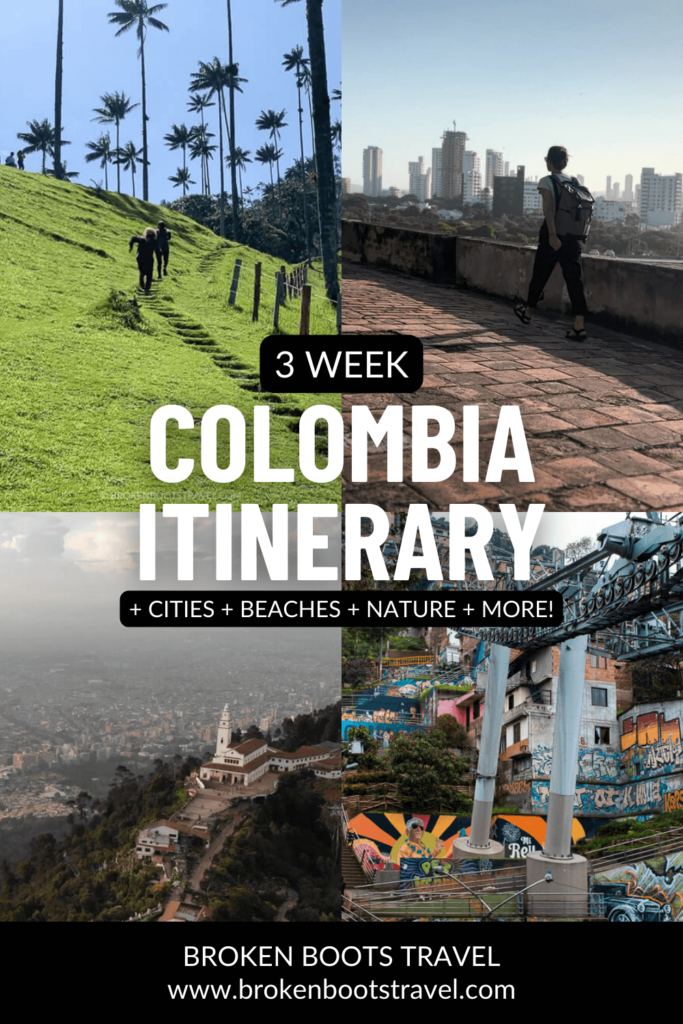
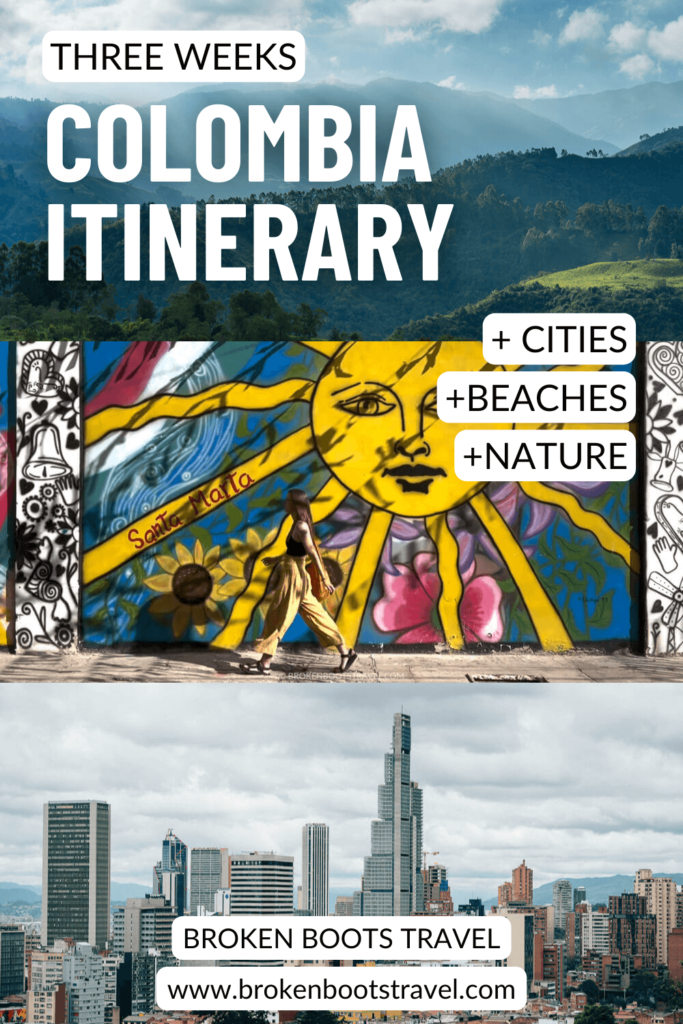
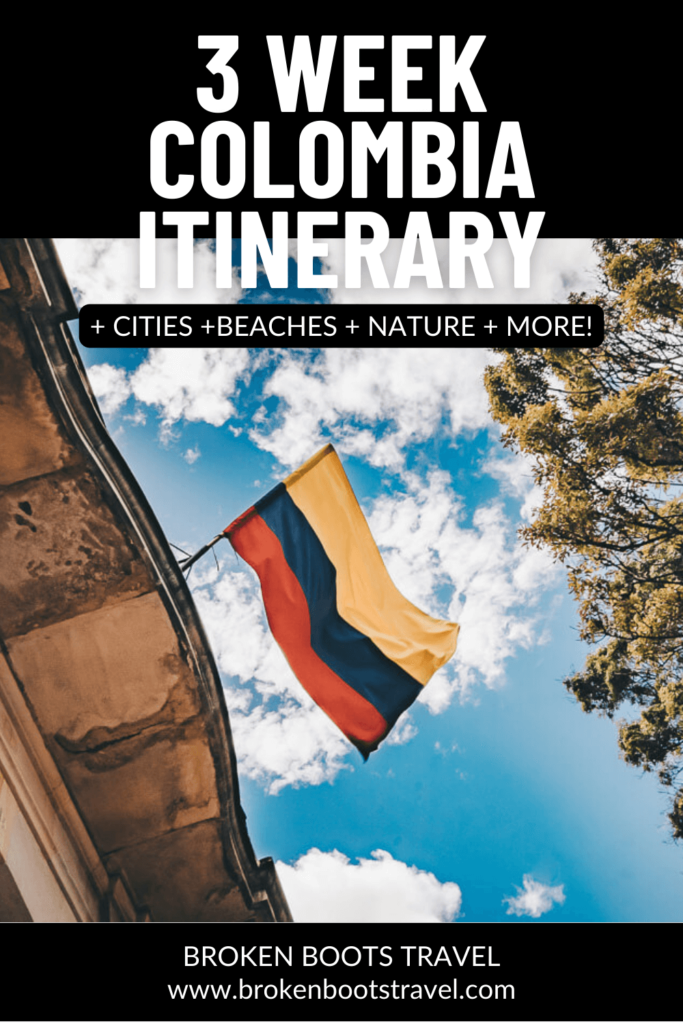
Love stories? Subscribe to my newsletter to get my latest updates delivered straight to your inbox every month. One email a month + no spam? Sign me up!
Virginia Taylor (Ginna) is a travel writer and photographer exploring the world until her boots wear through. She’s currently on a mission to explore all 32 departments of Colombia, though she formerly called the Middle East home. Want to know more? Visit the About Page.